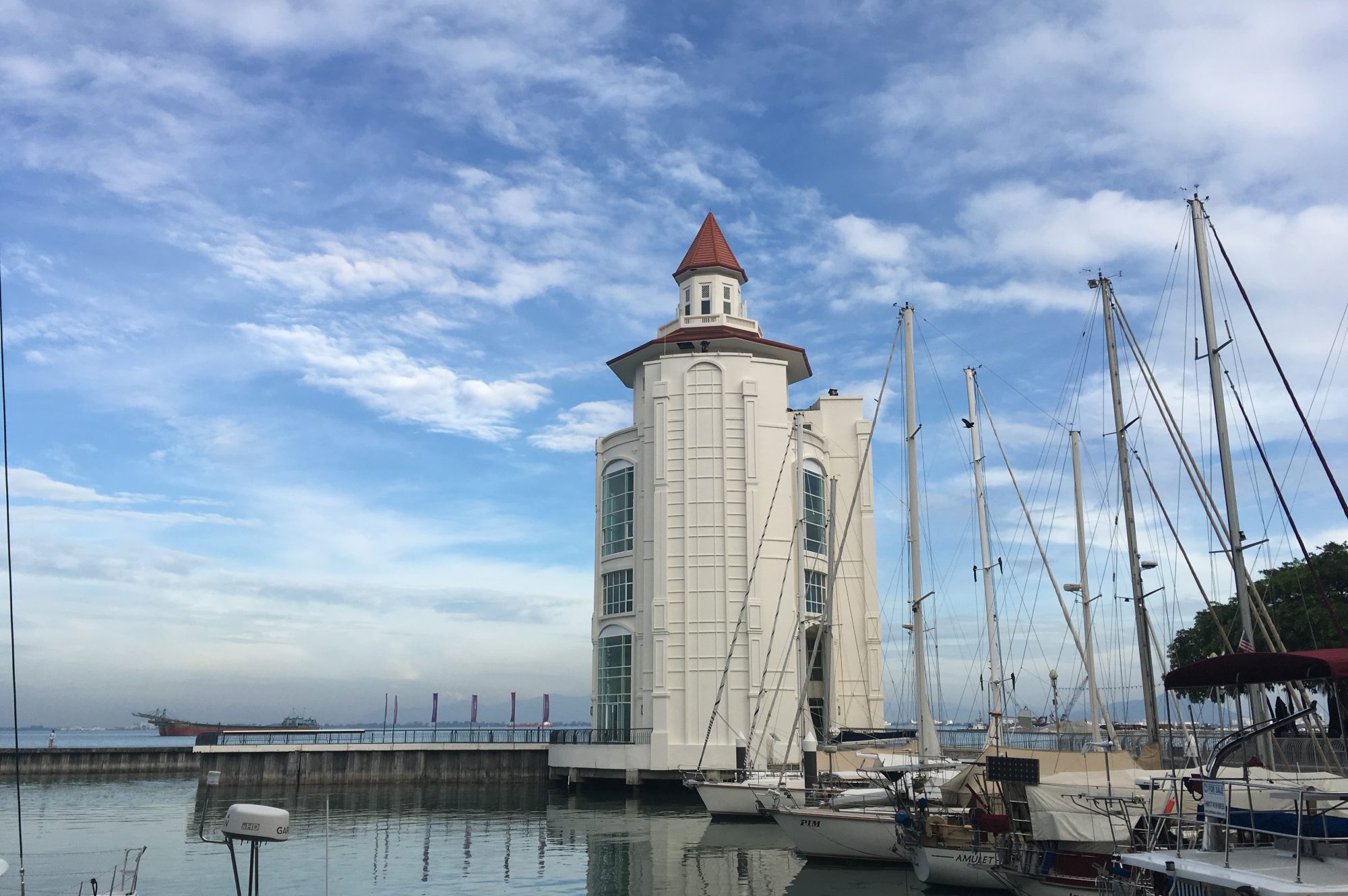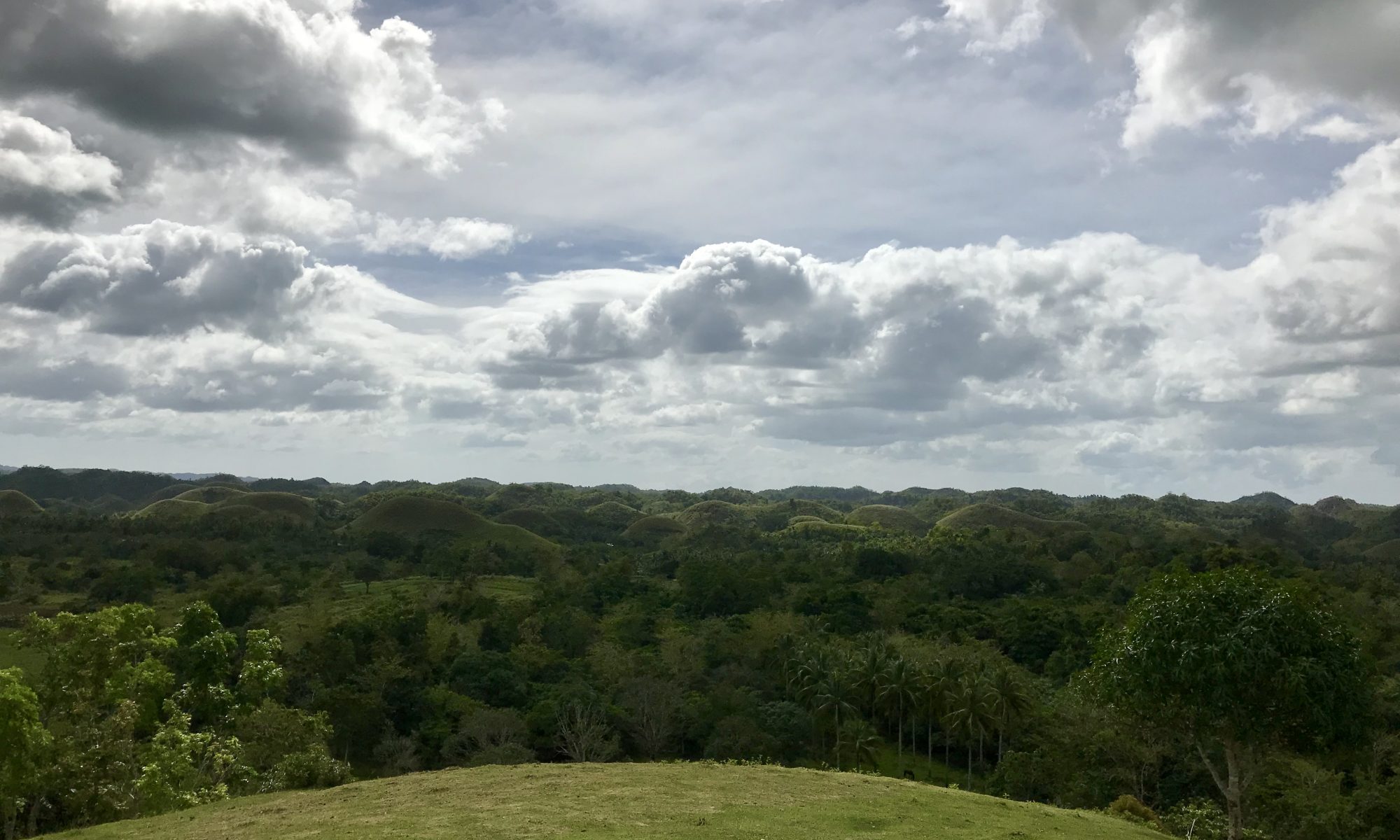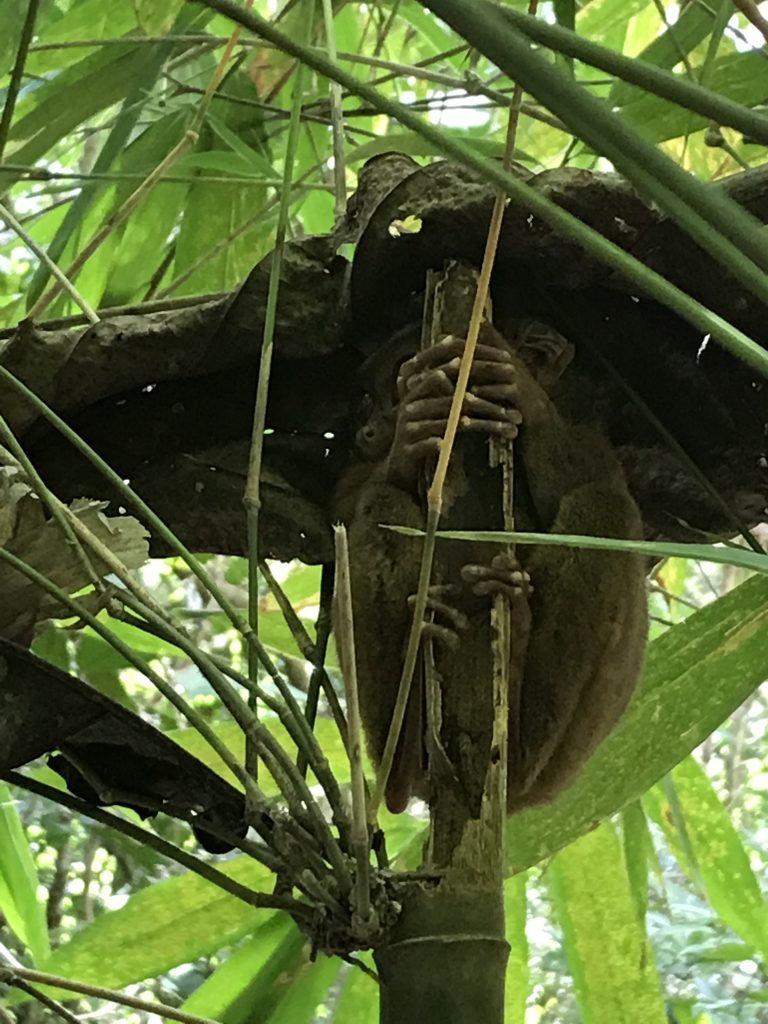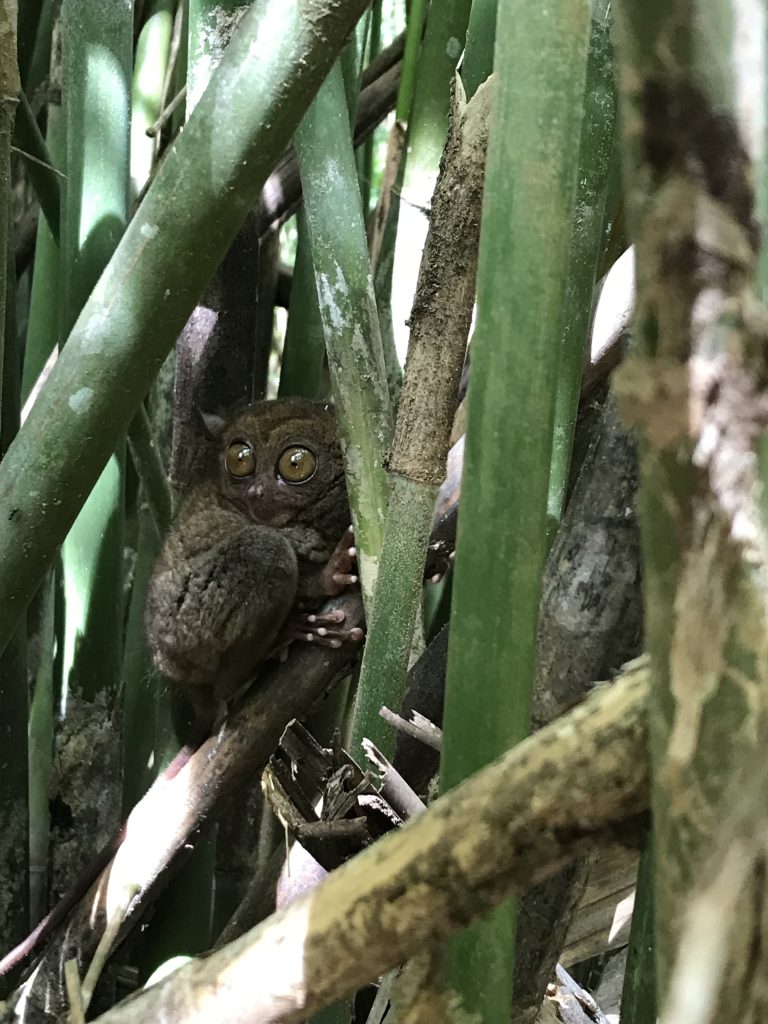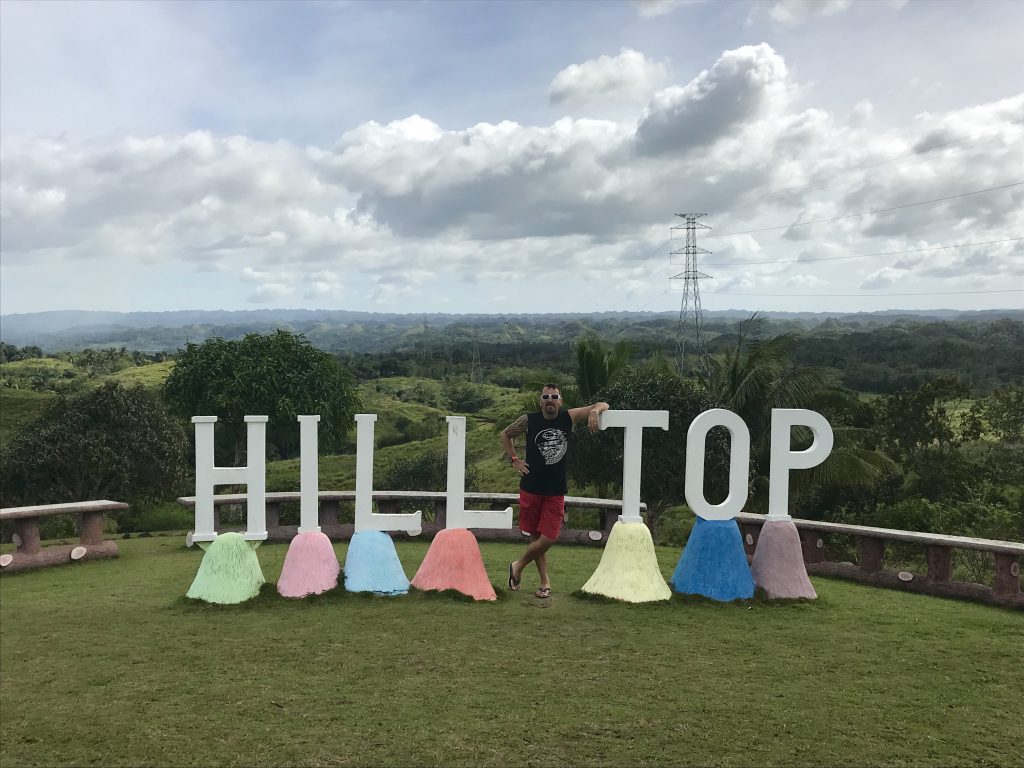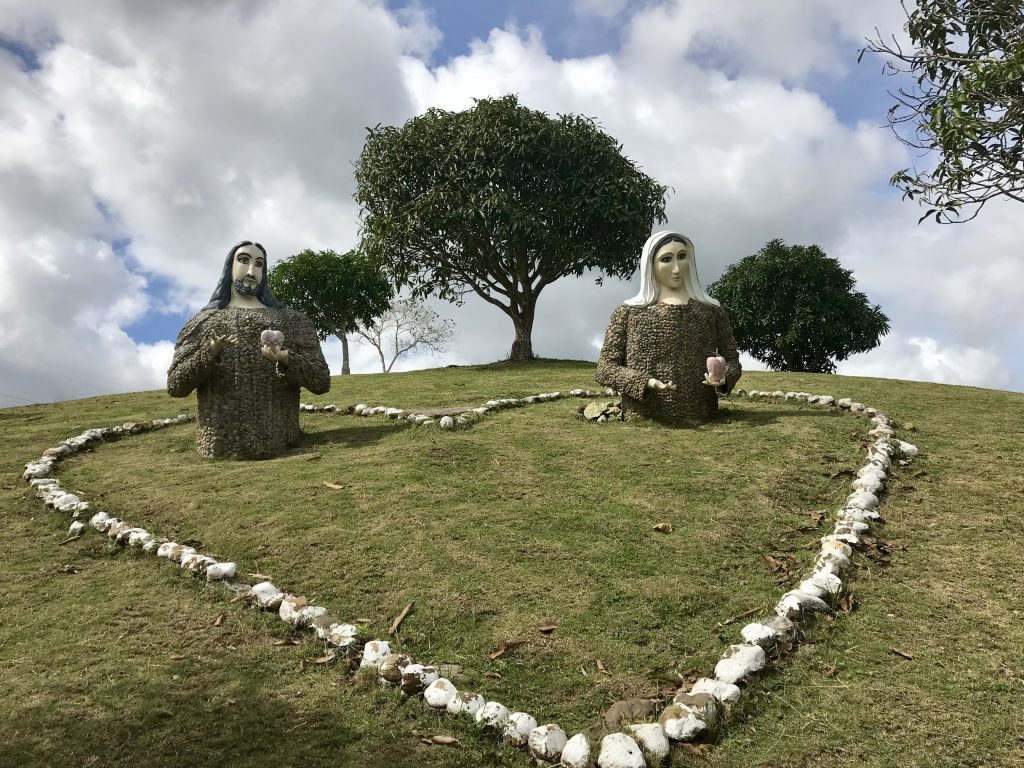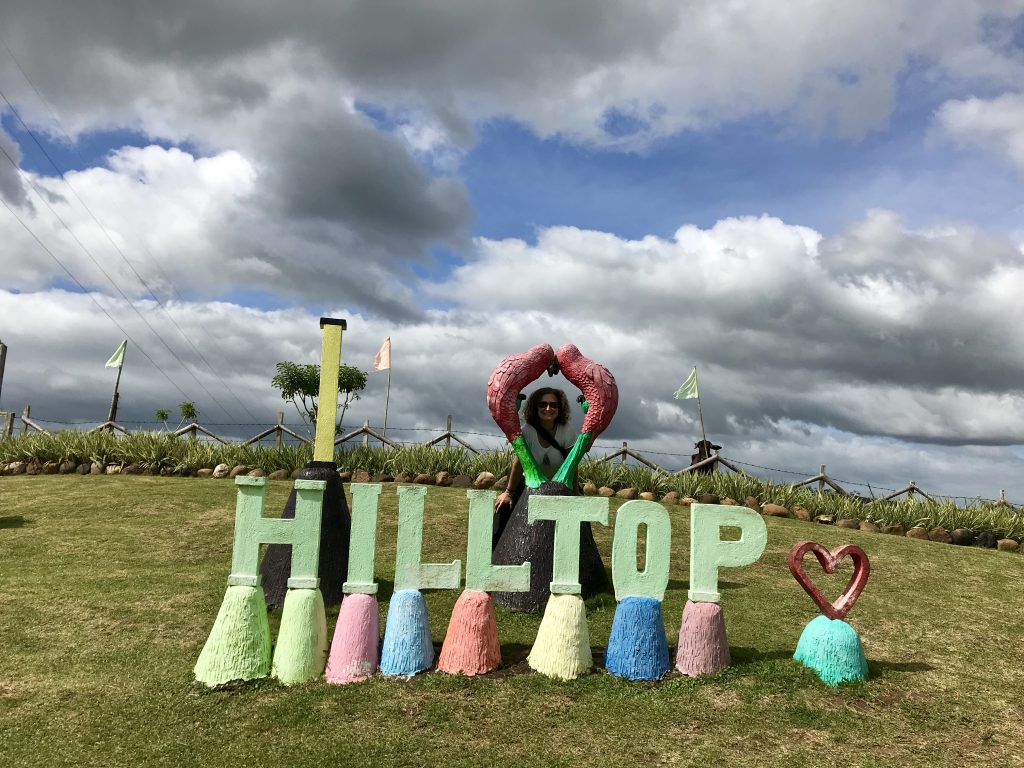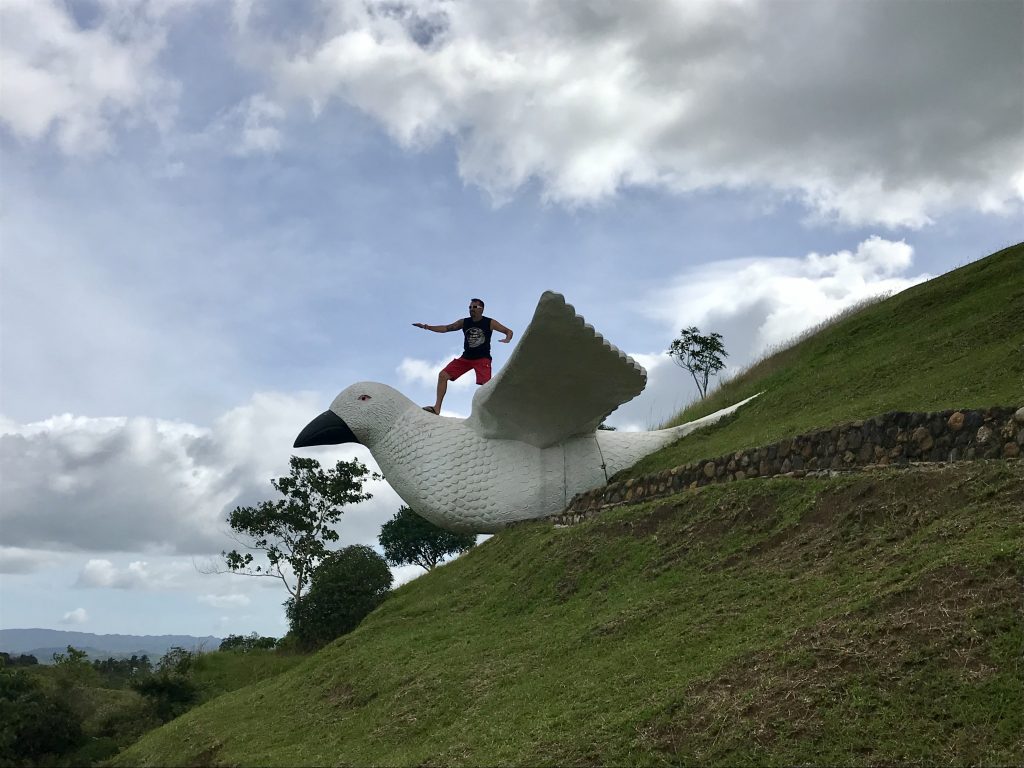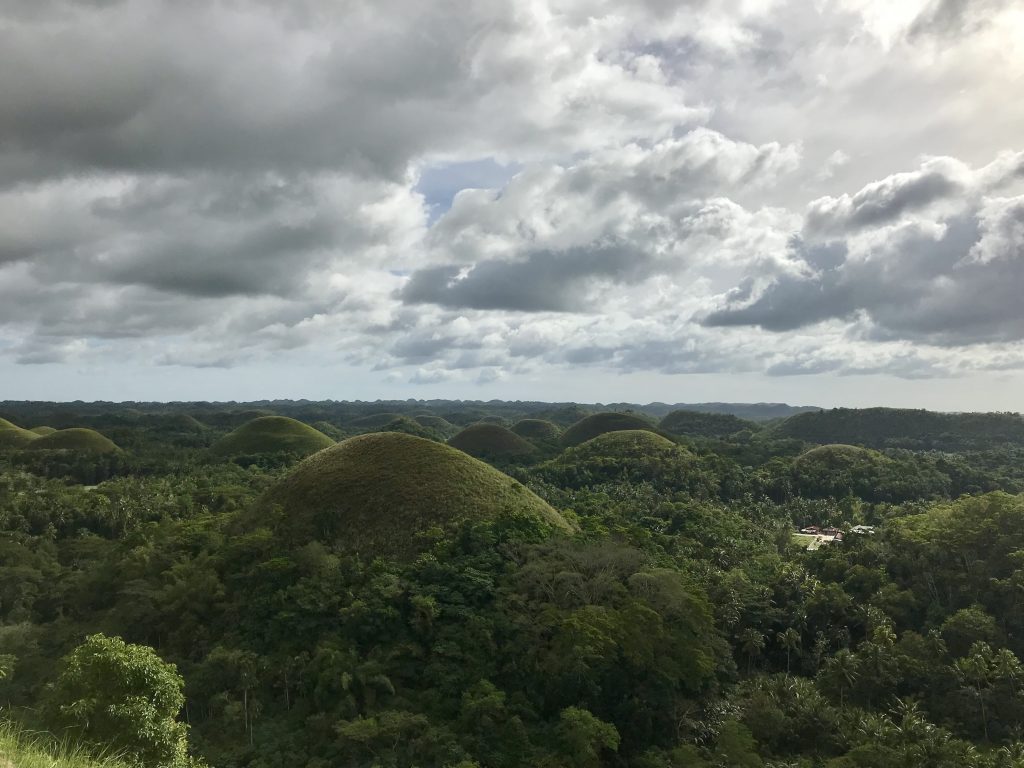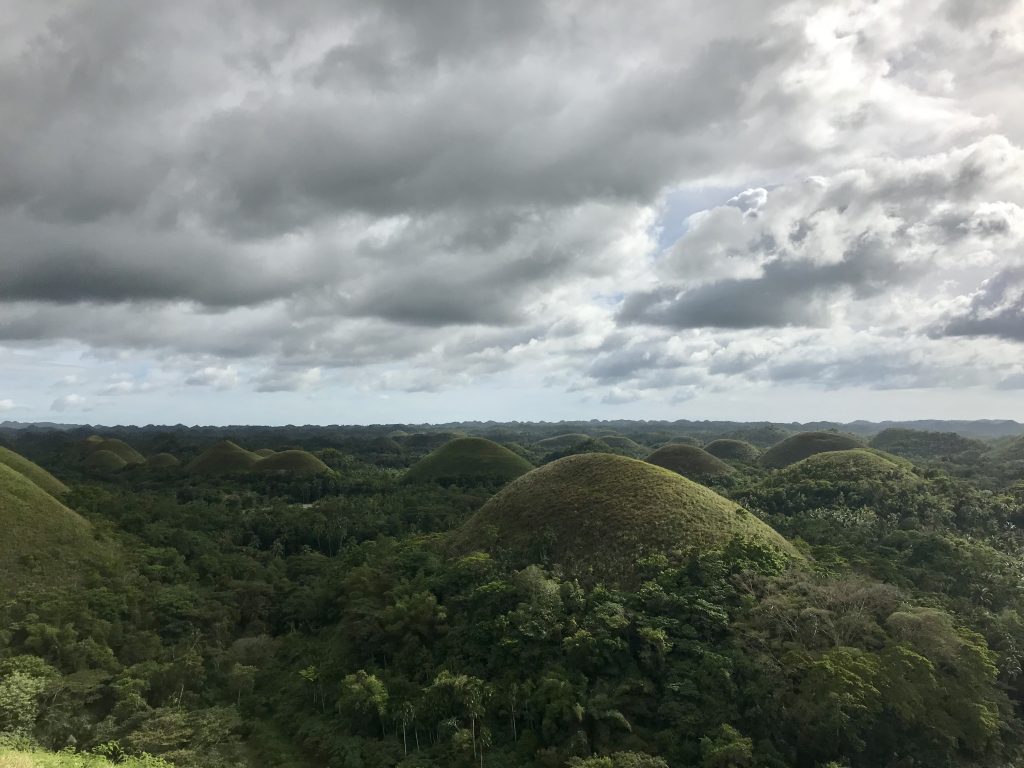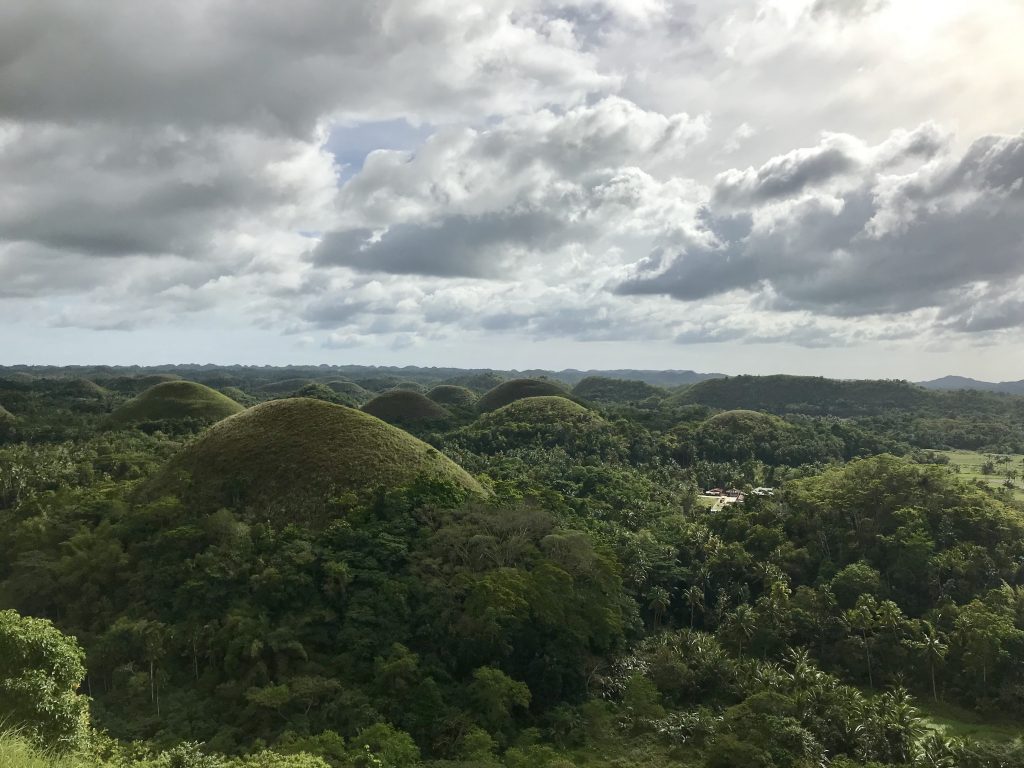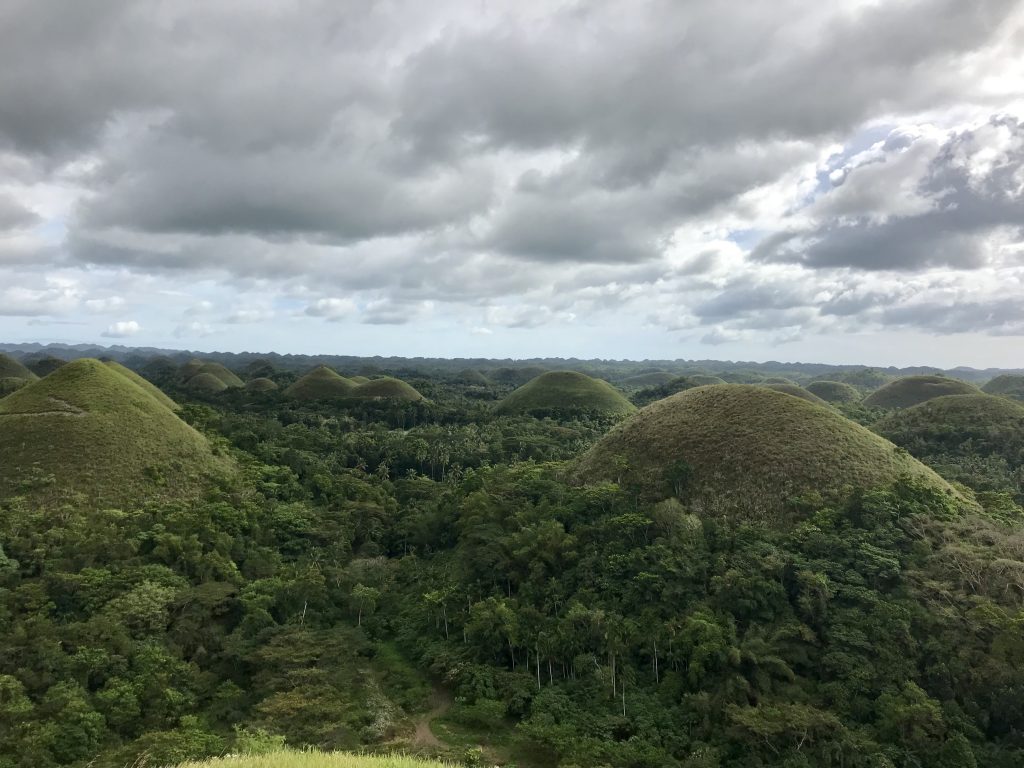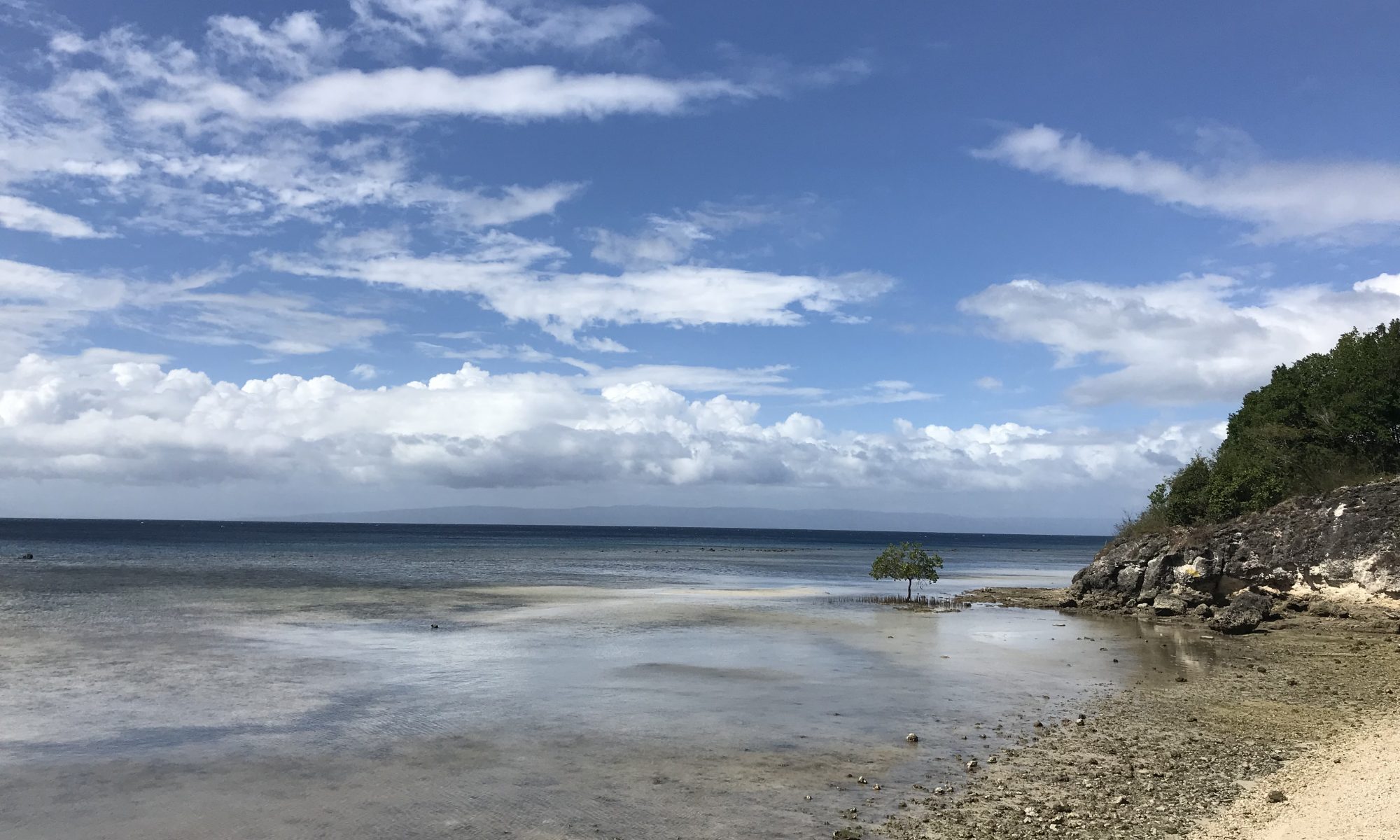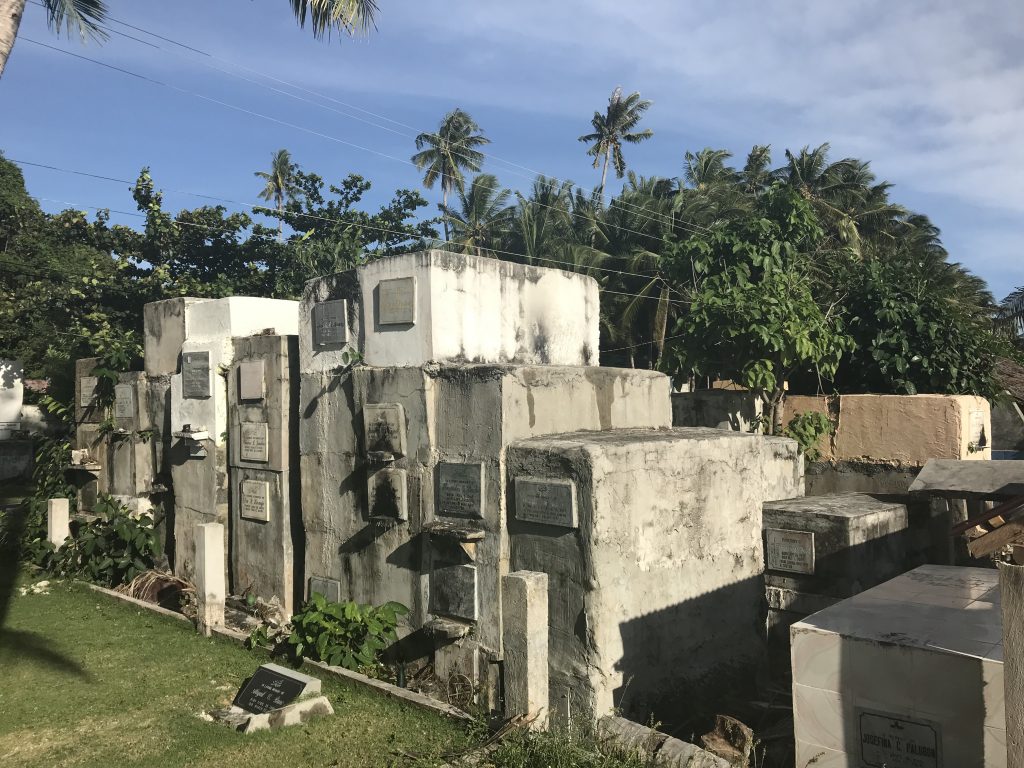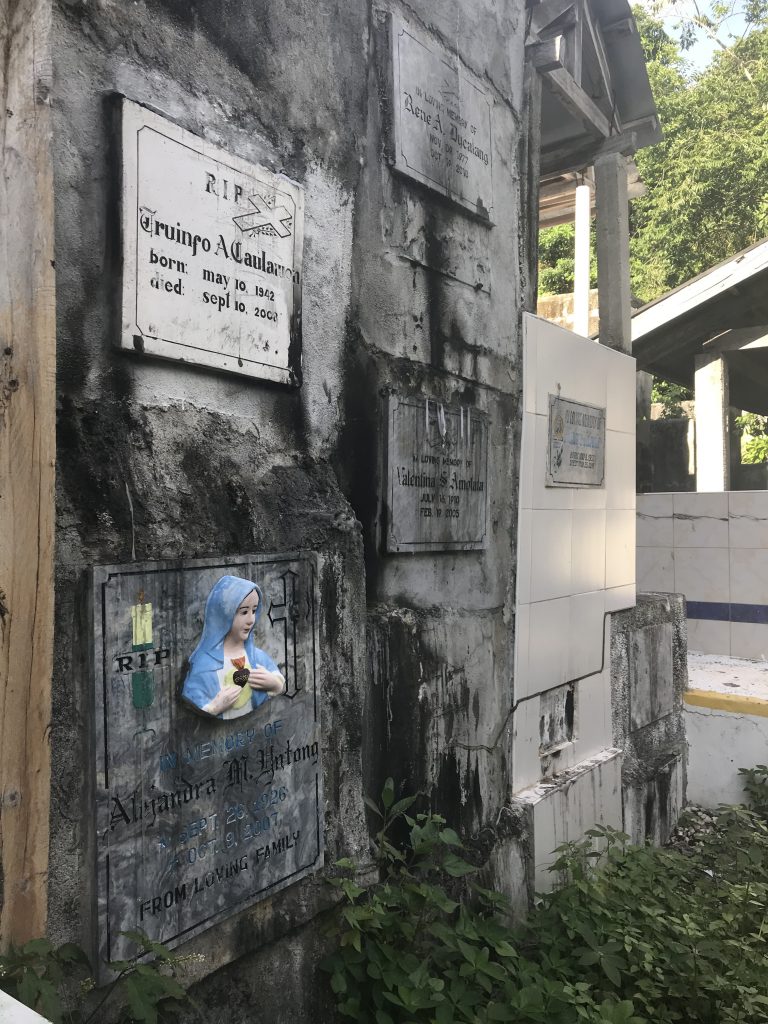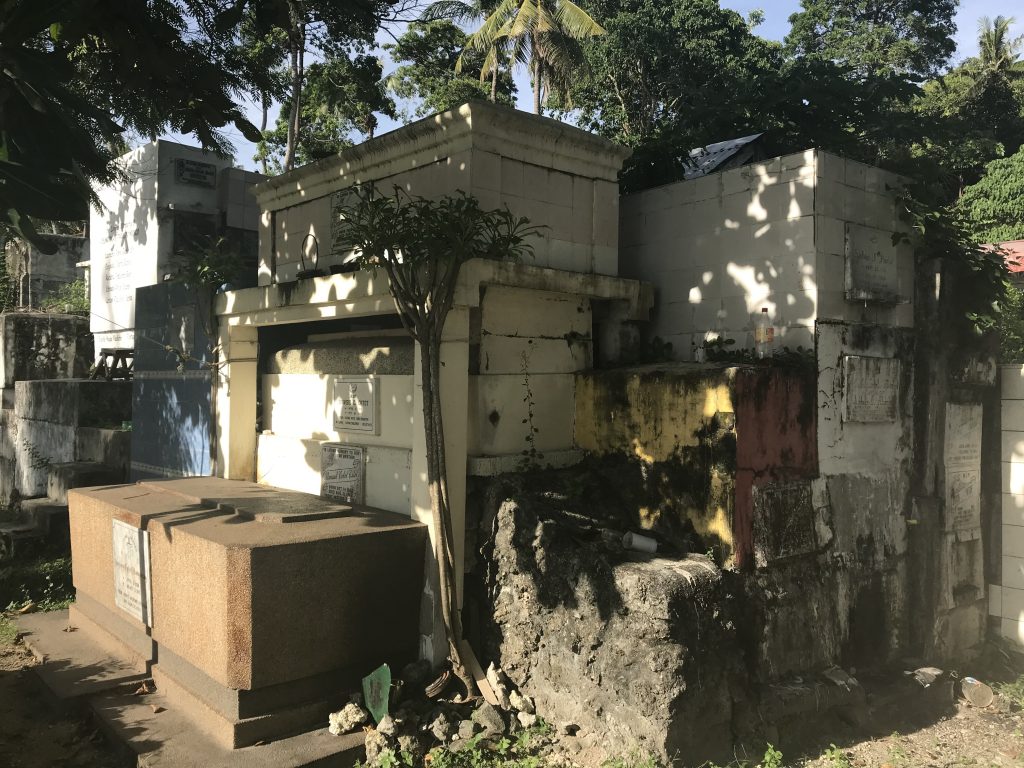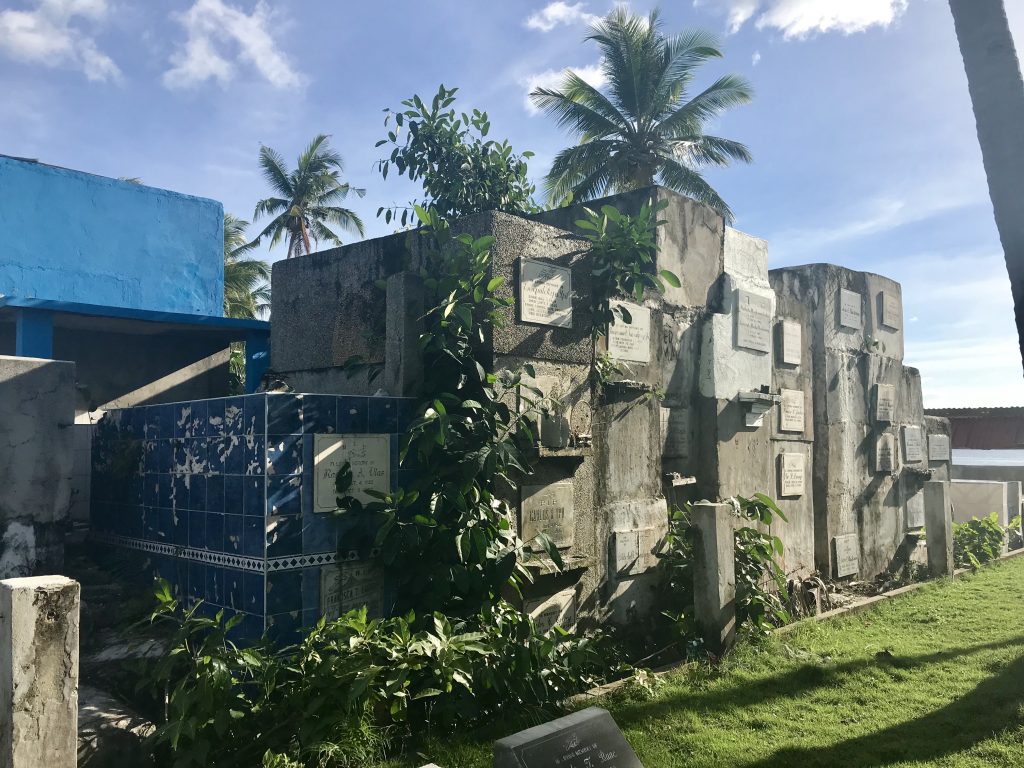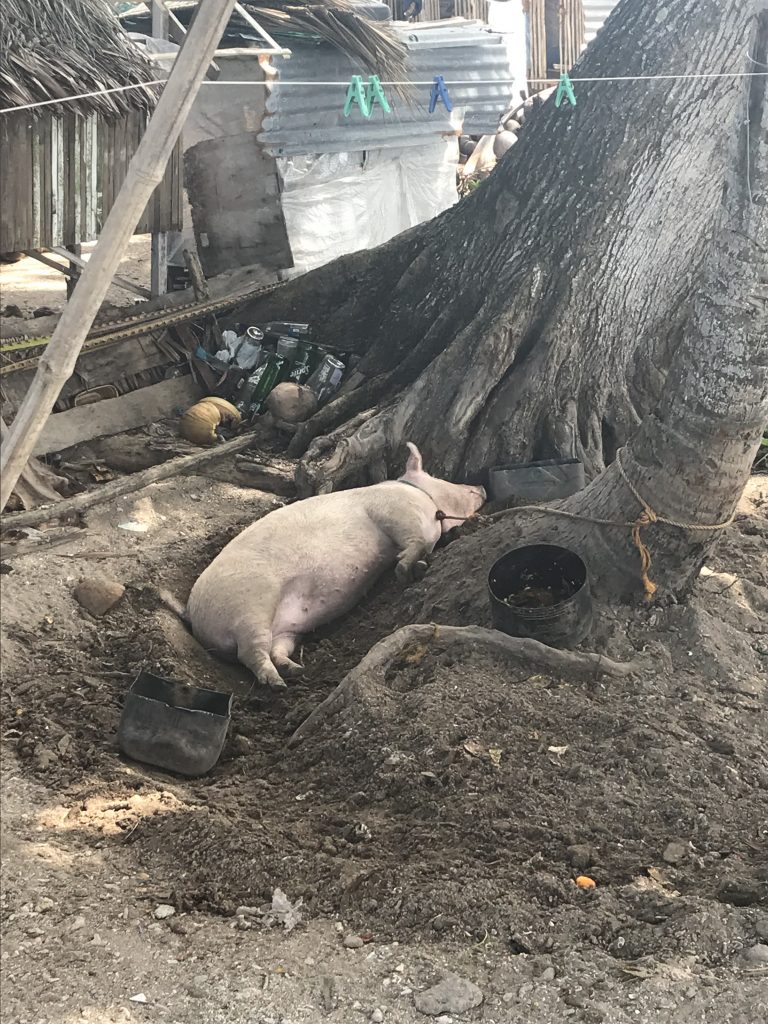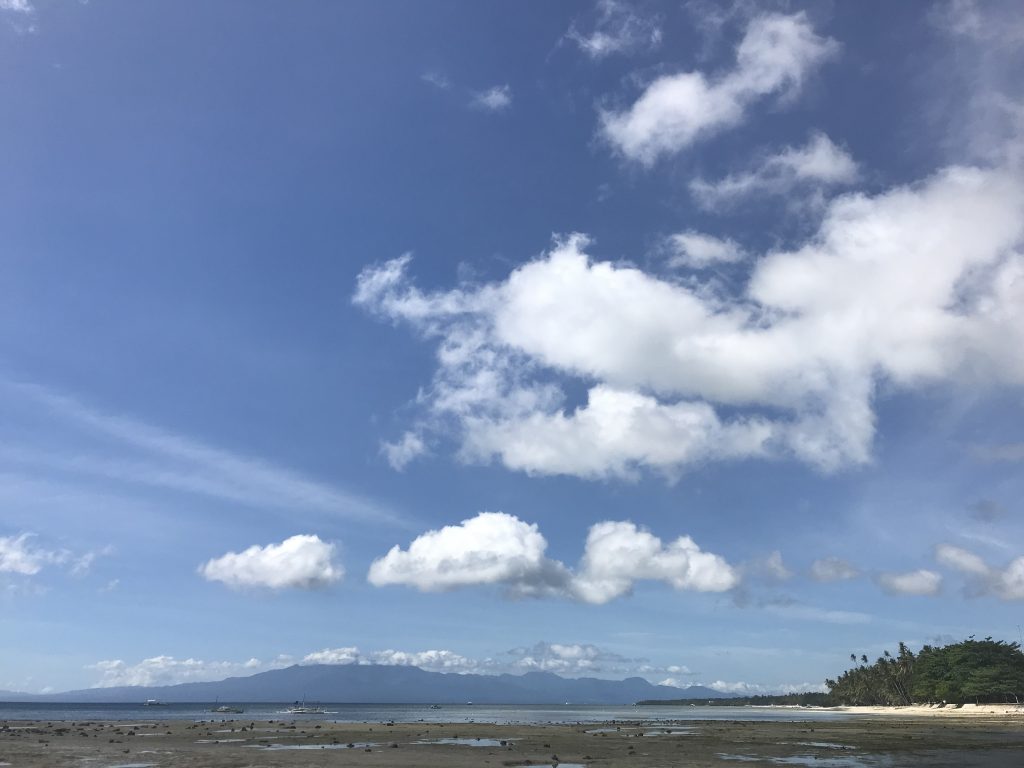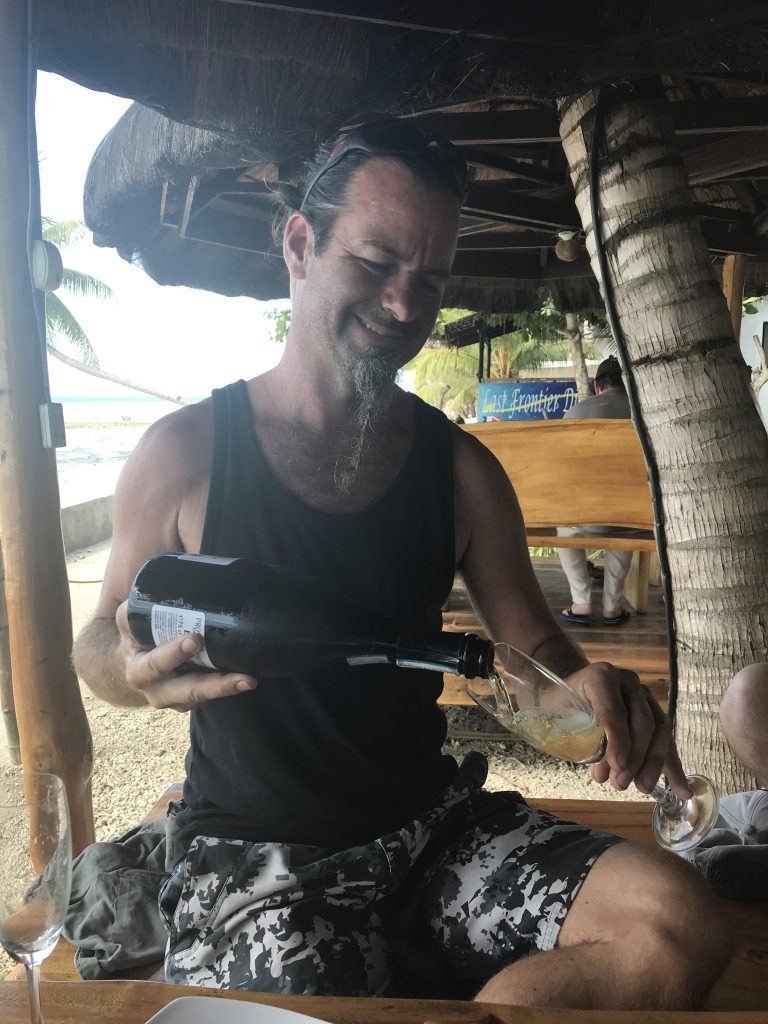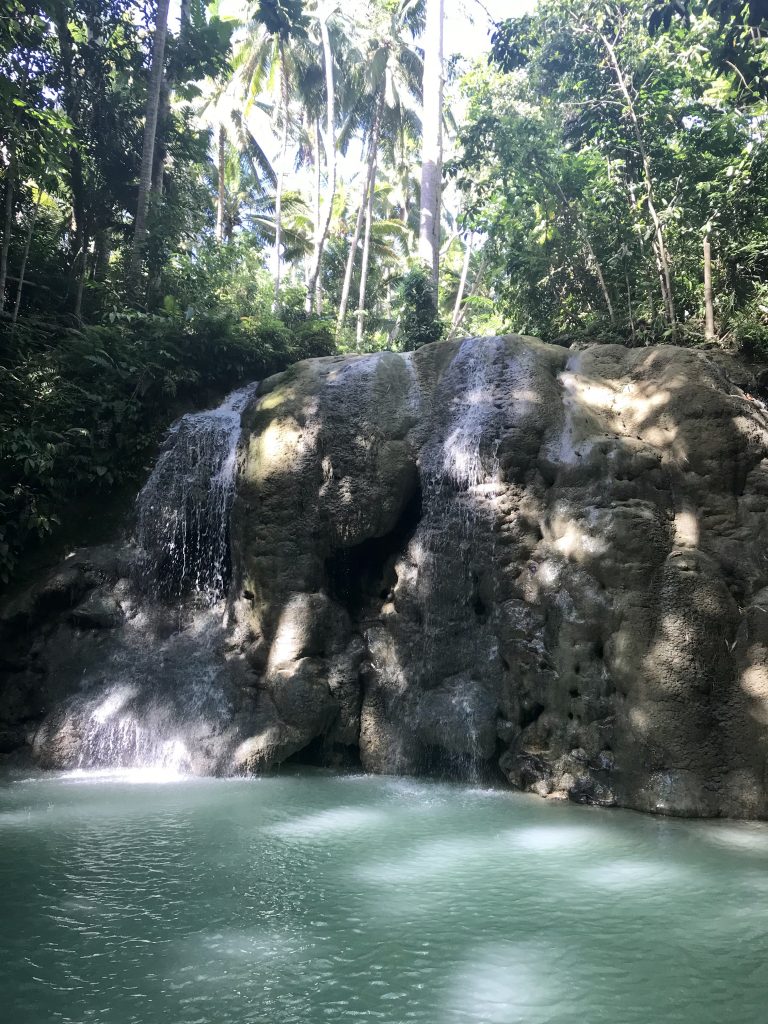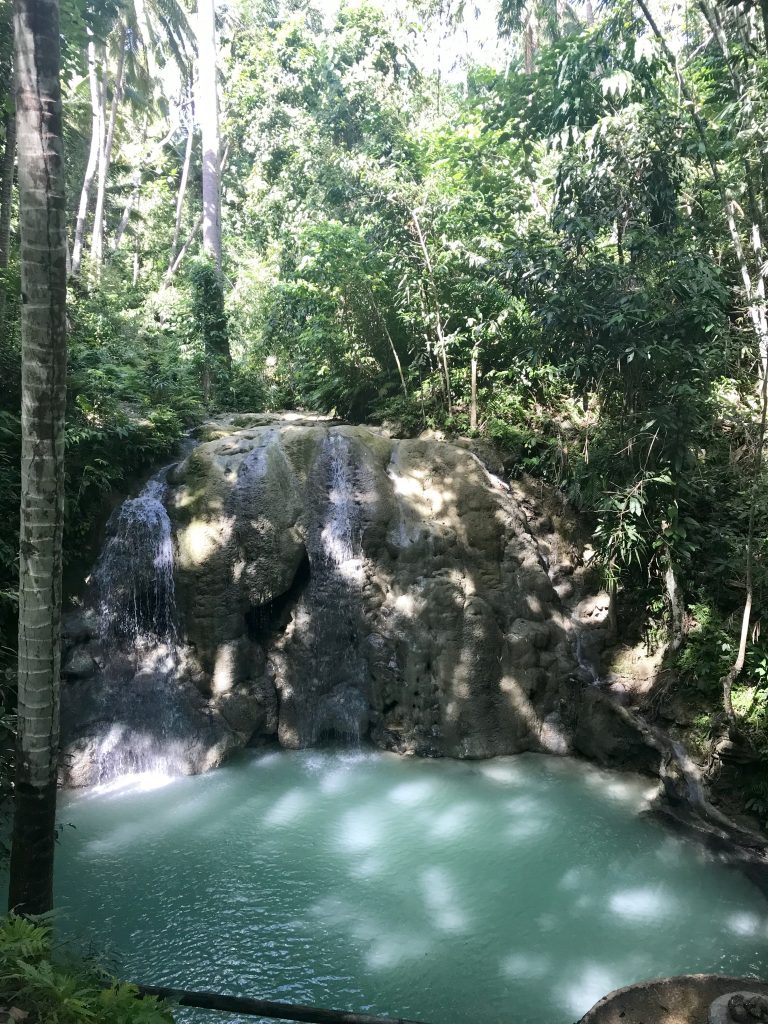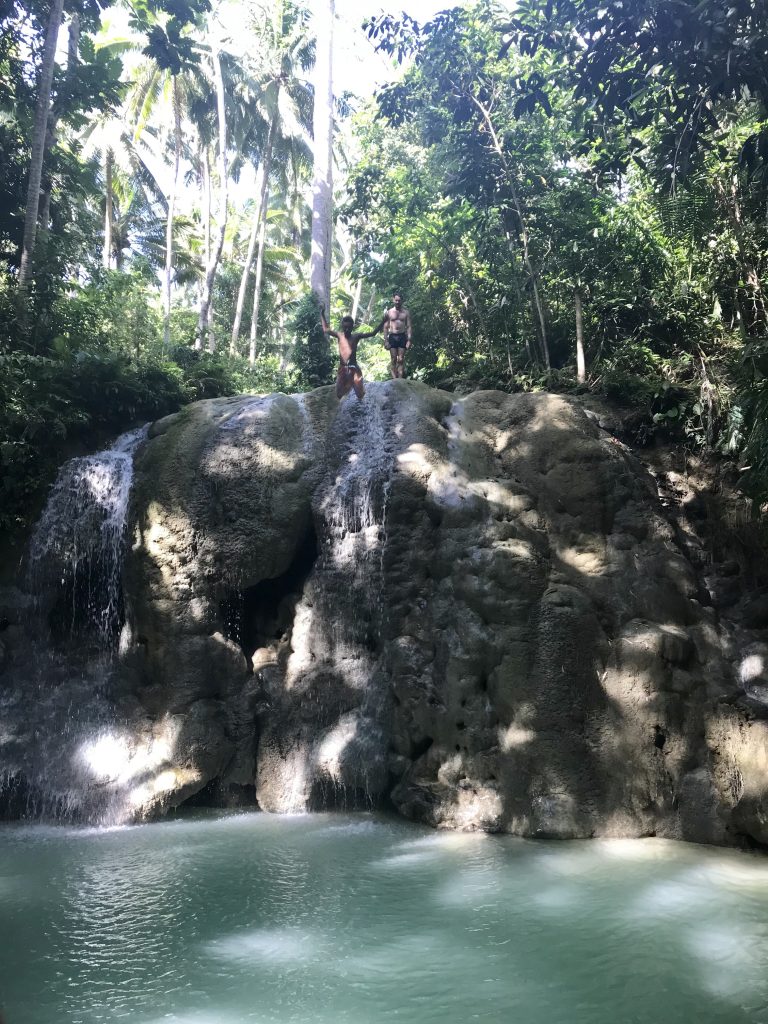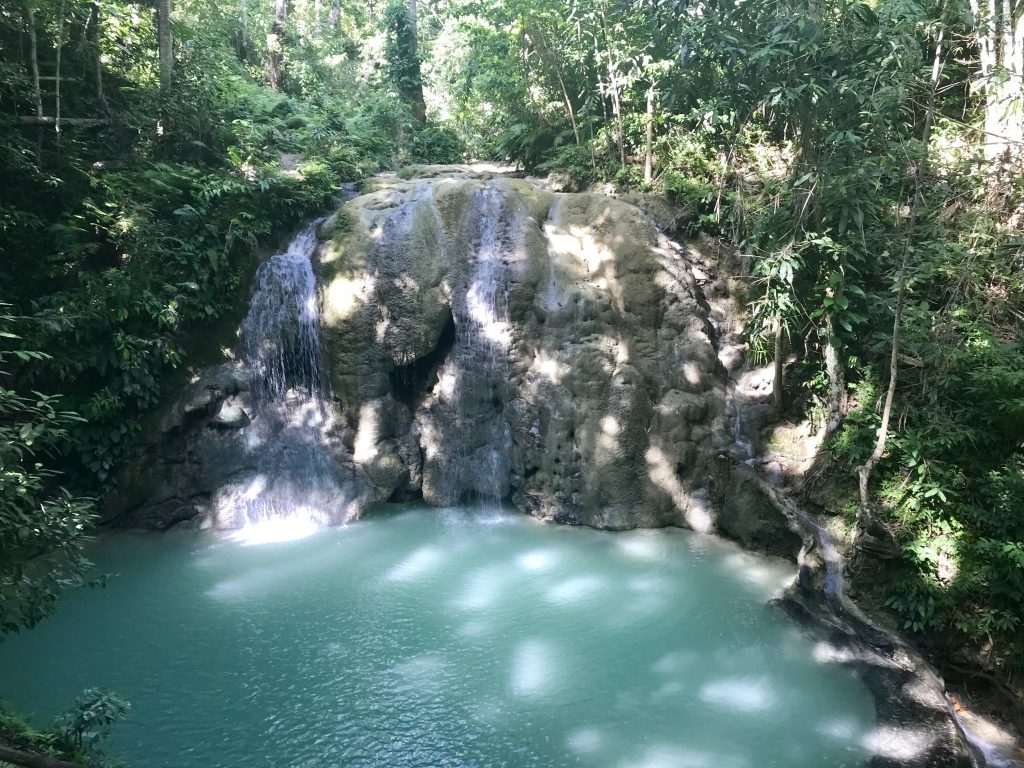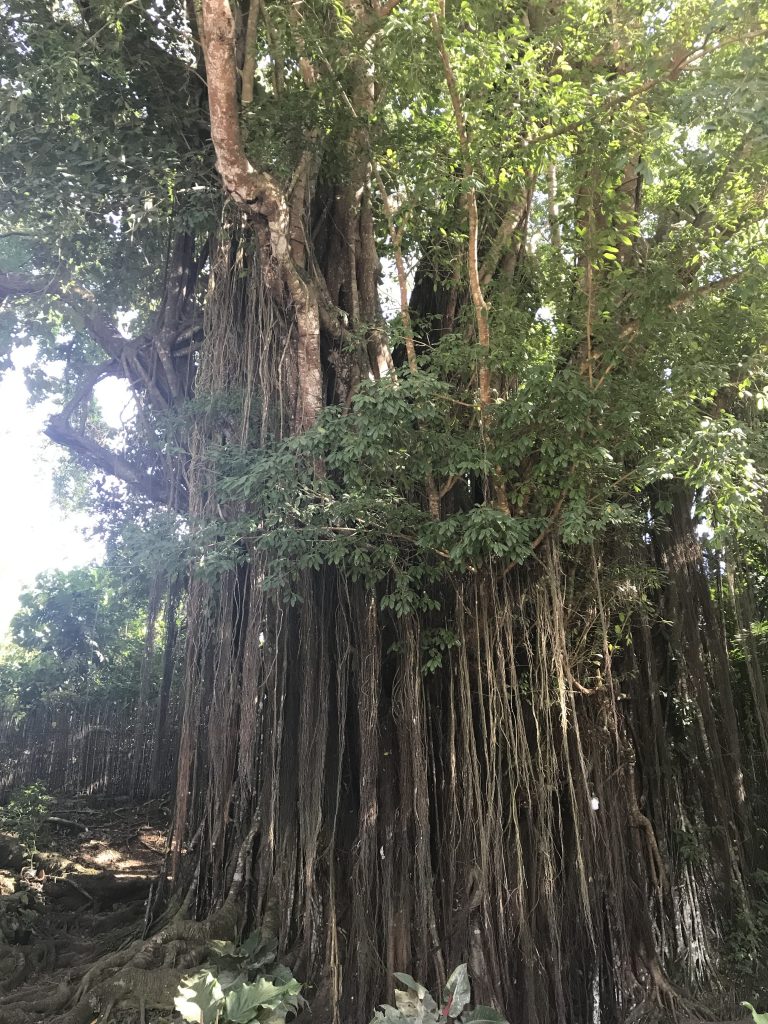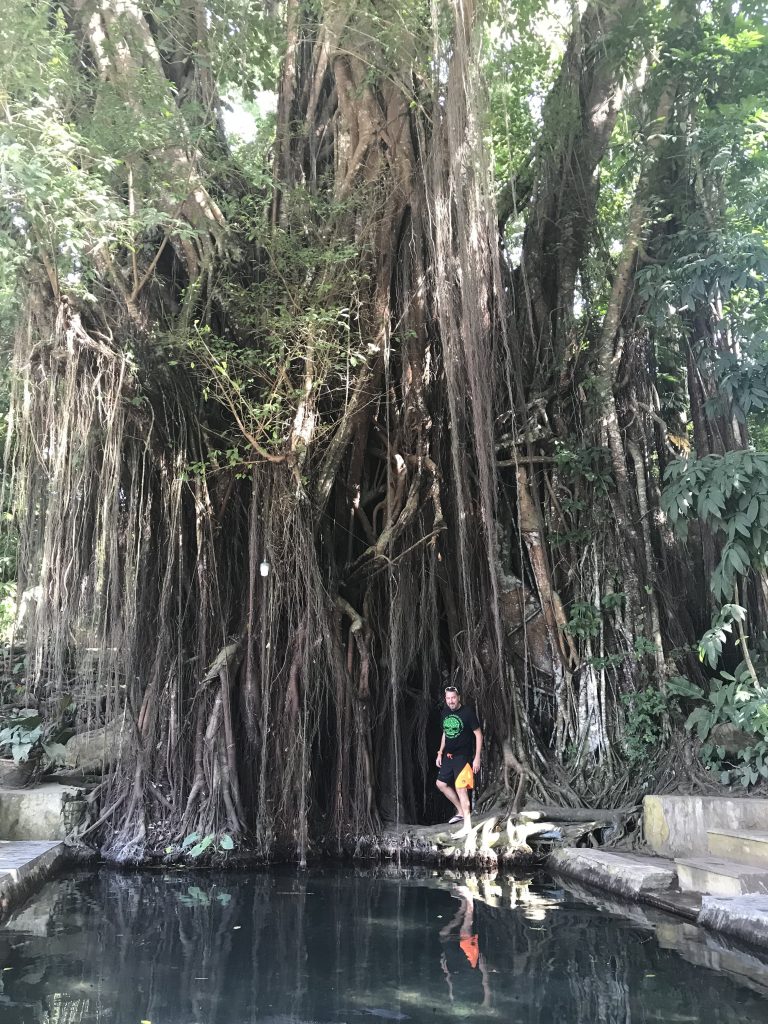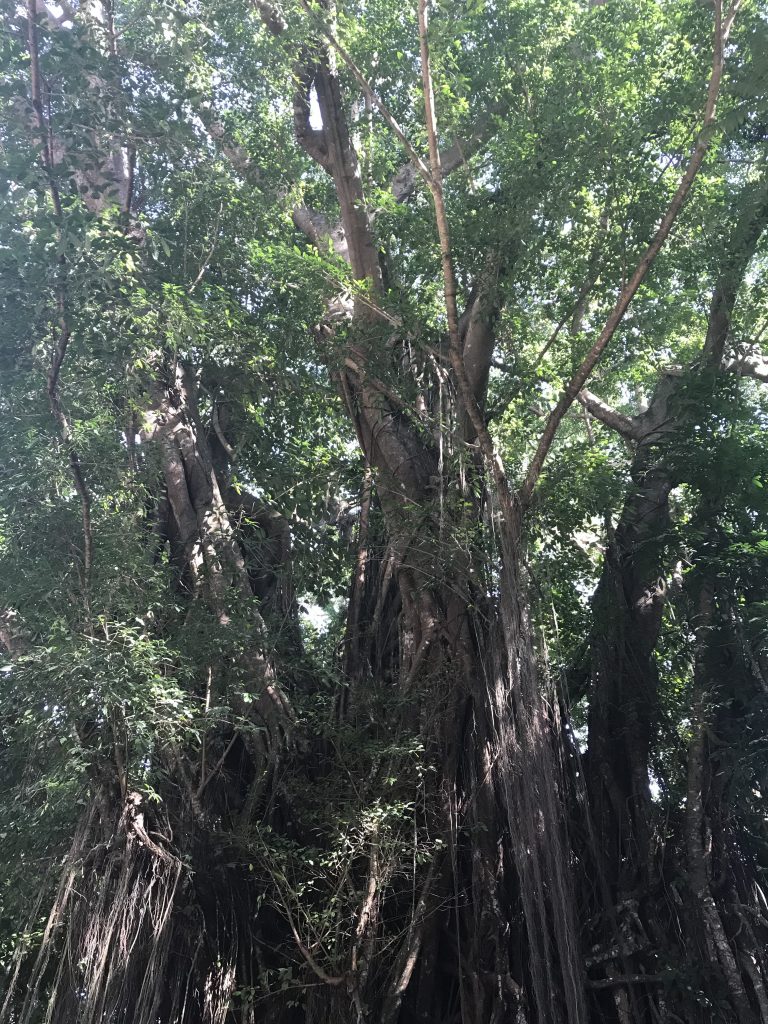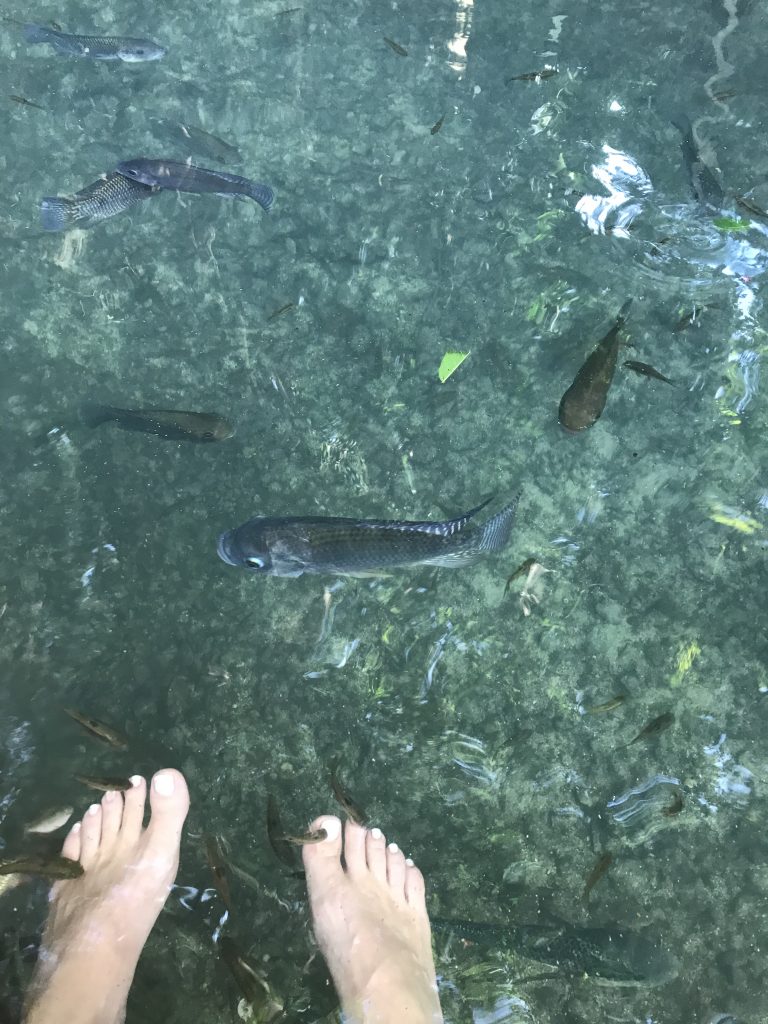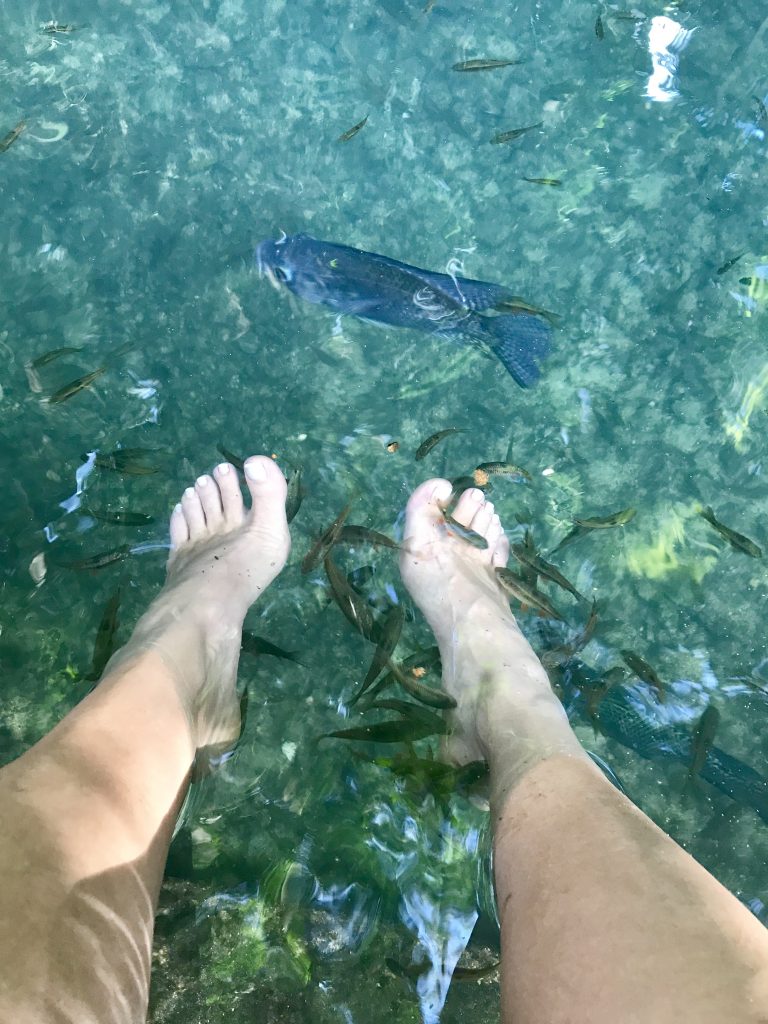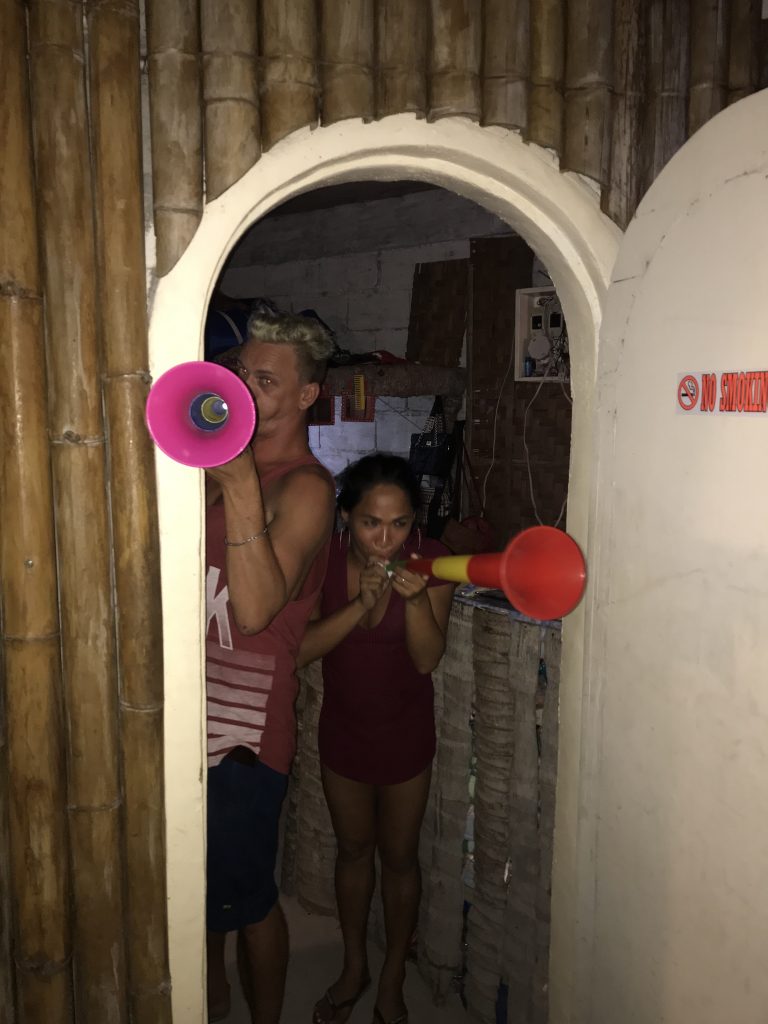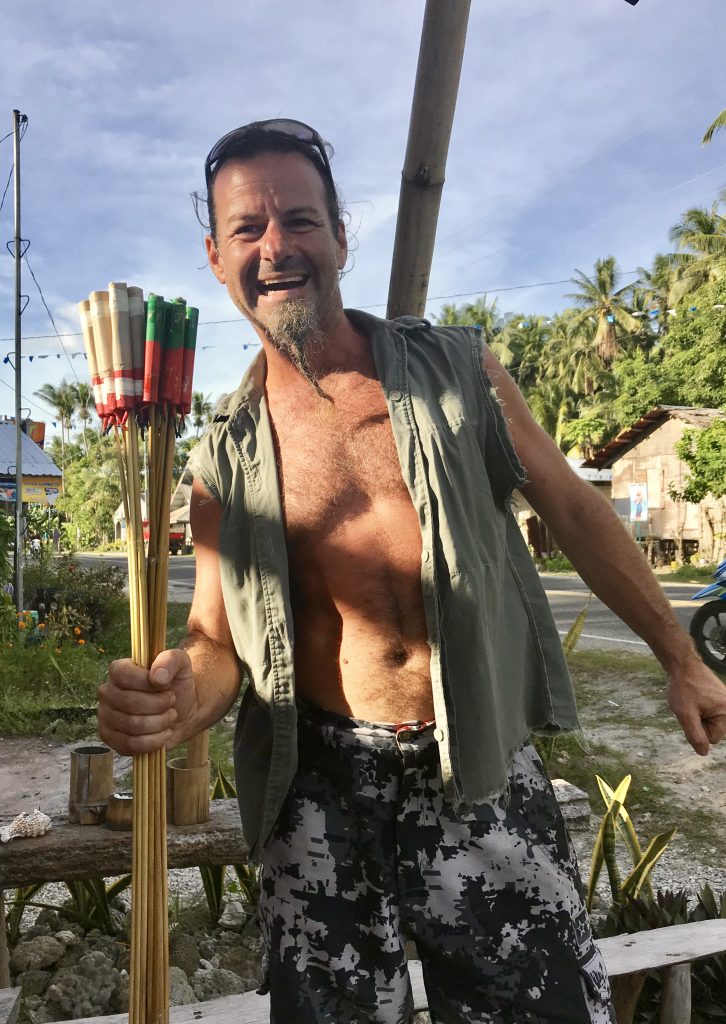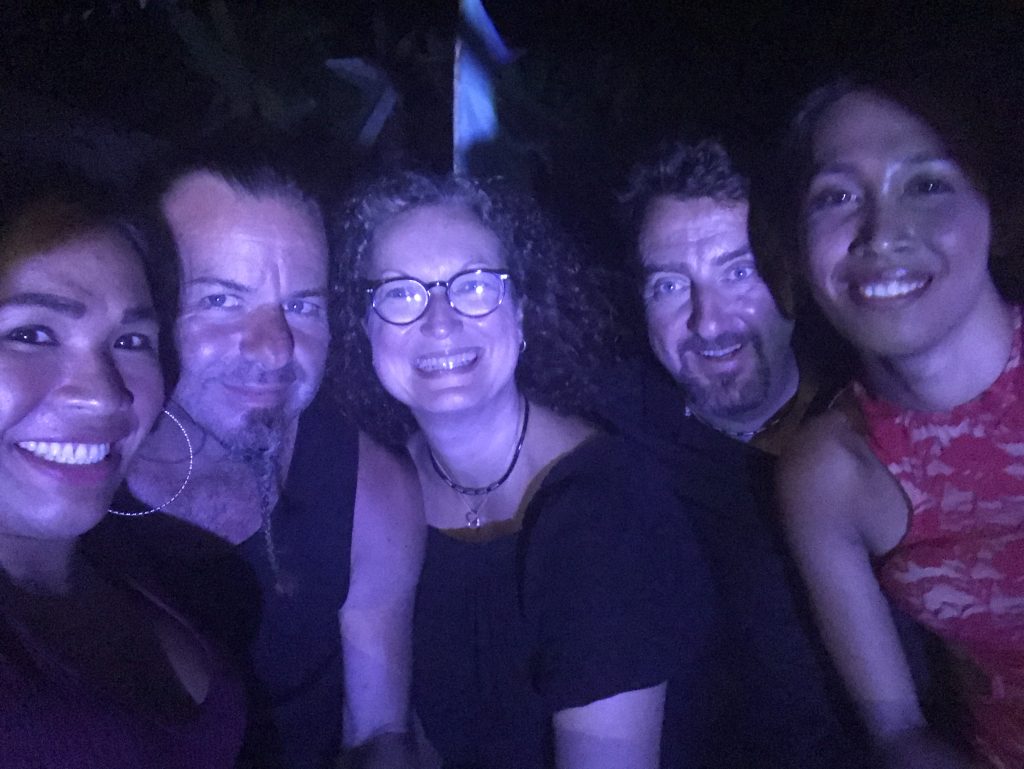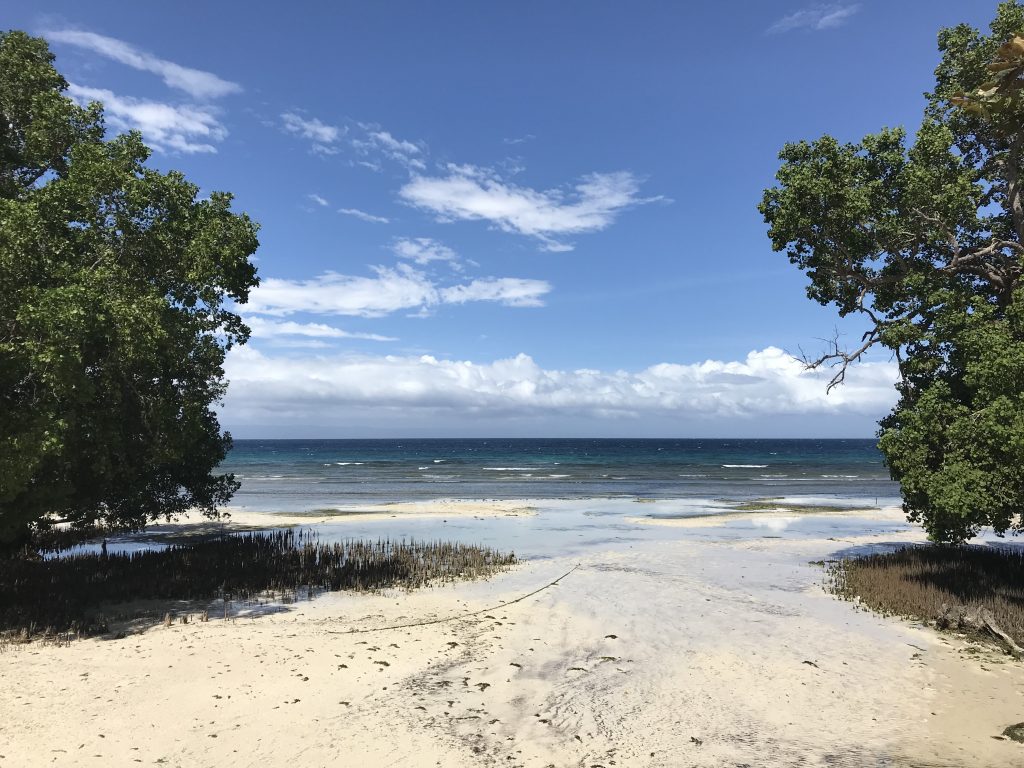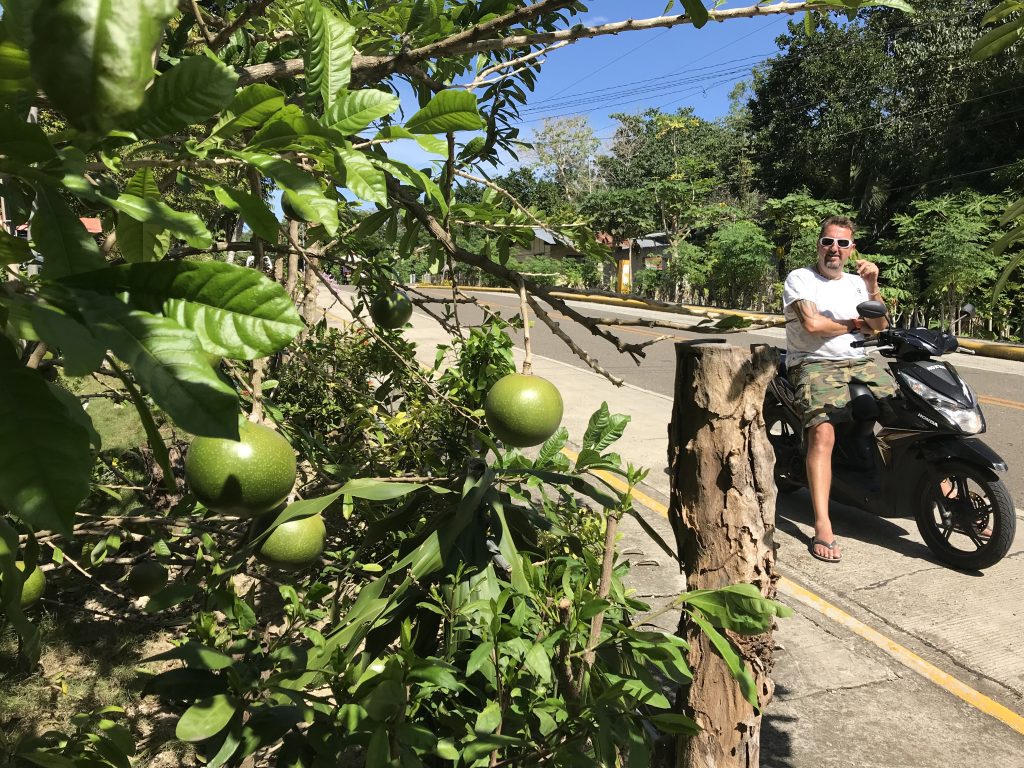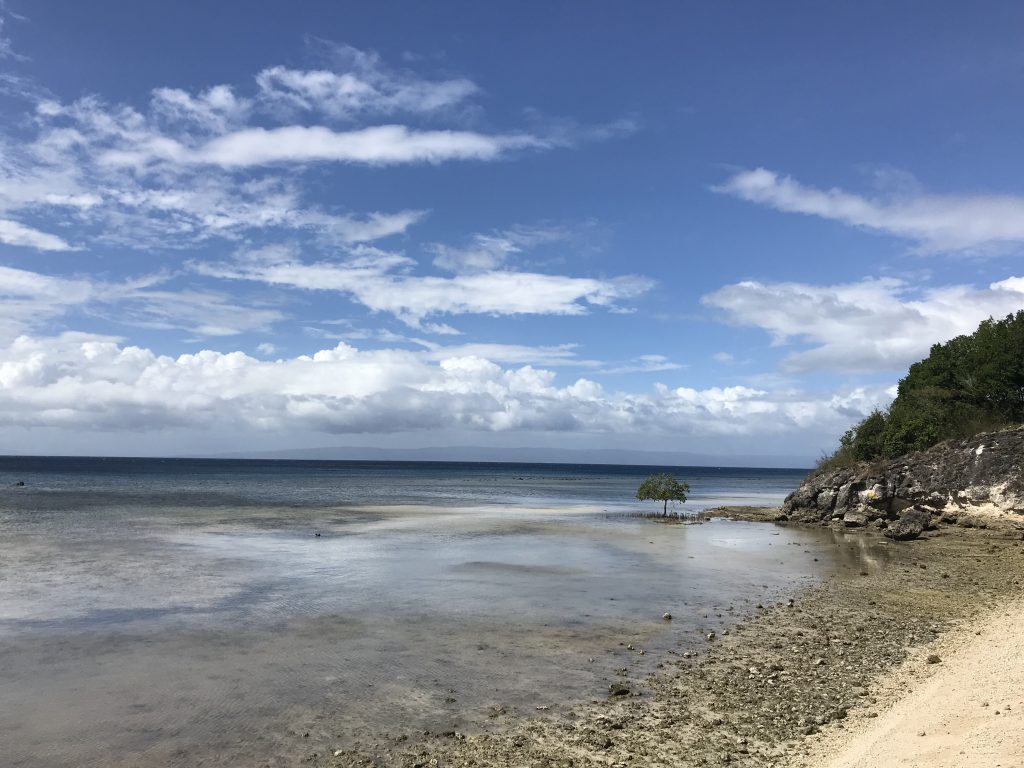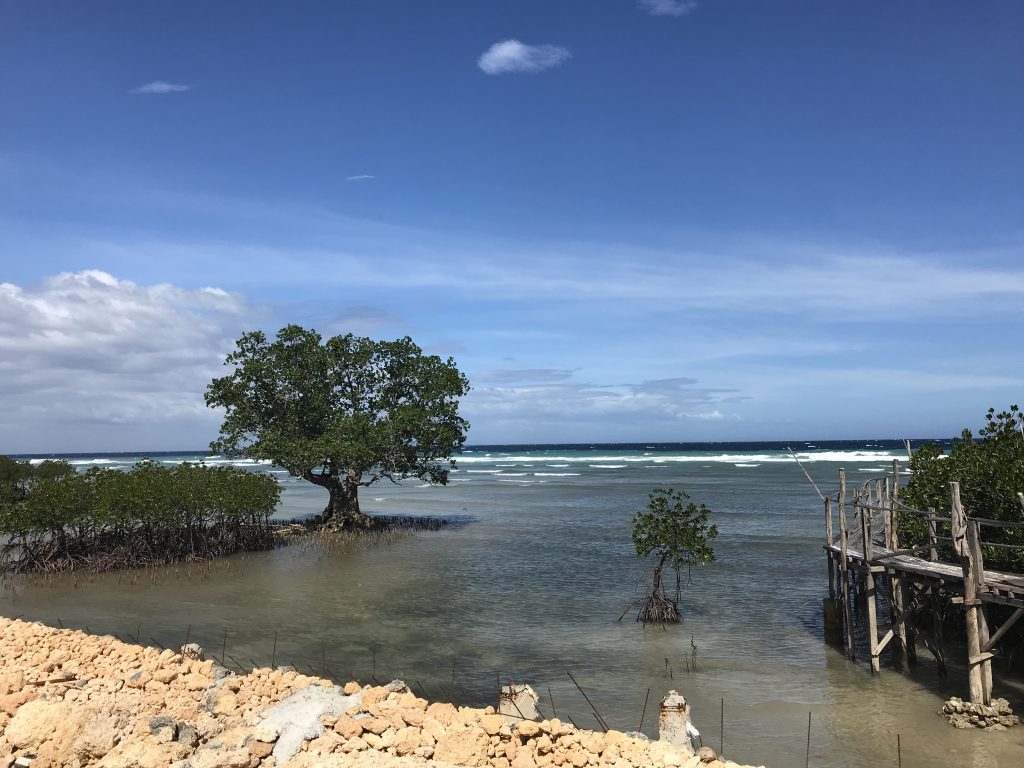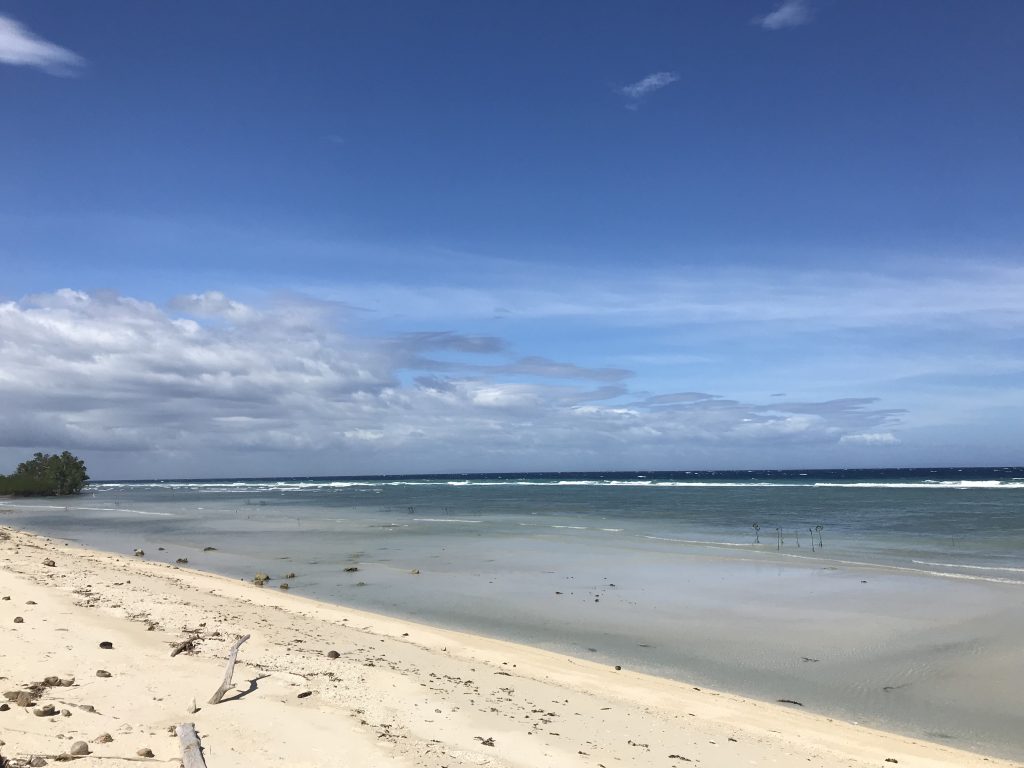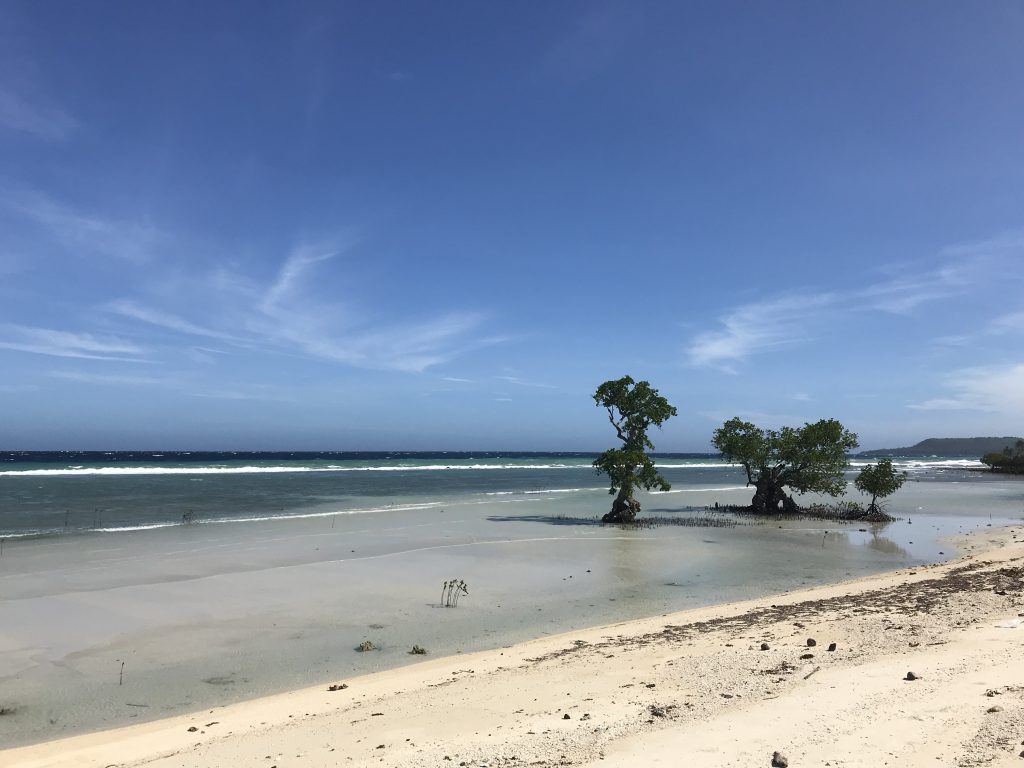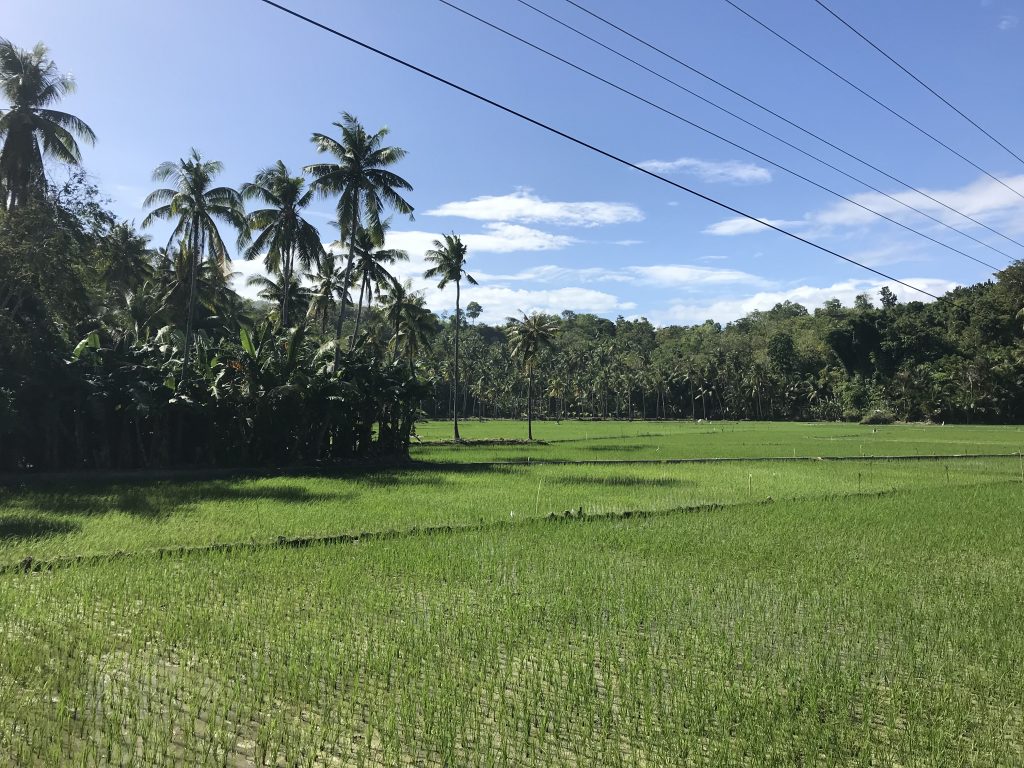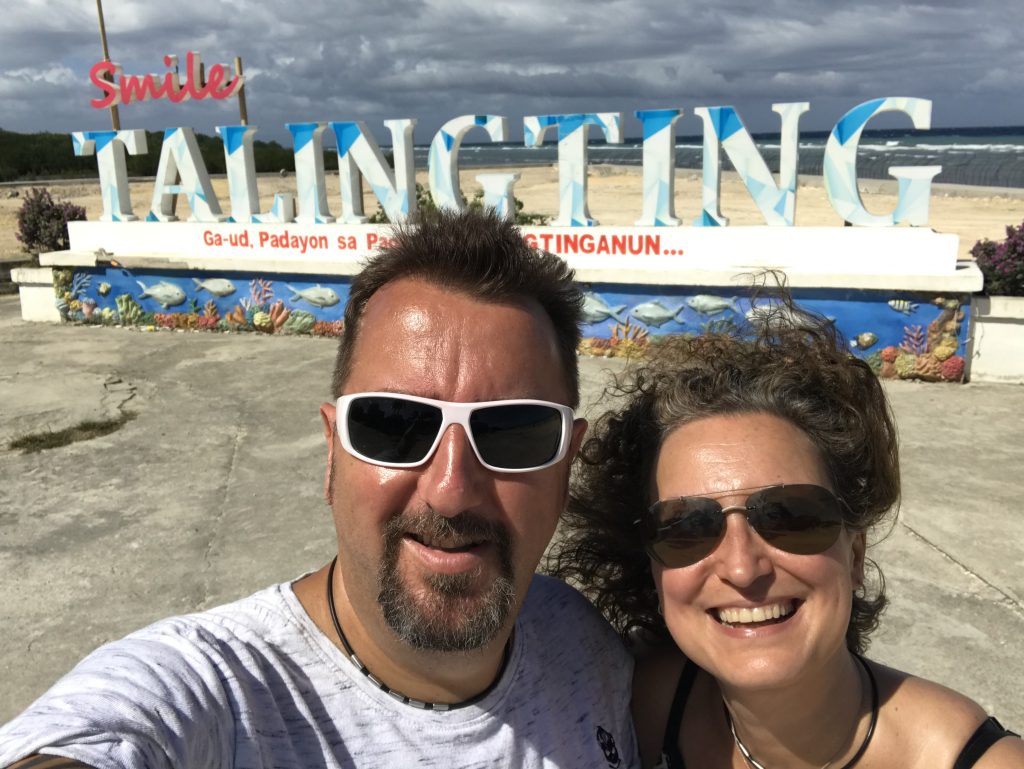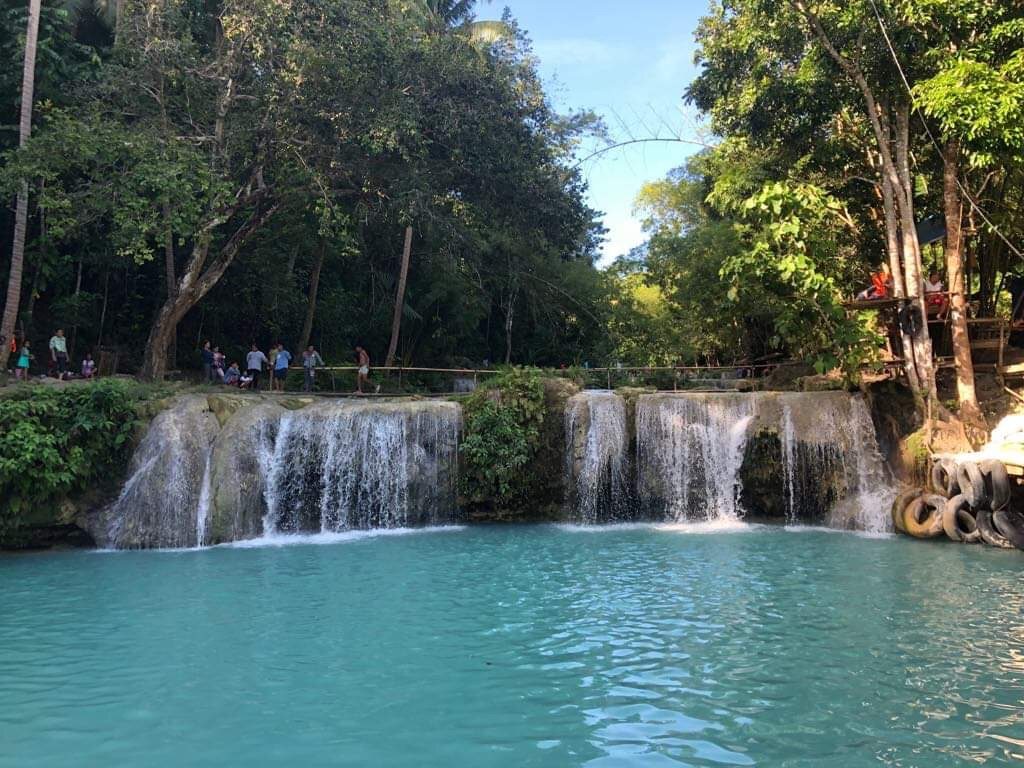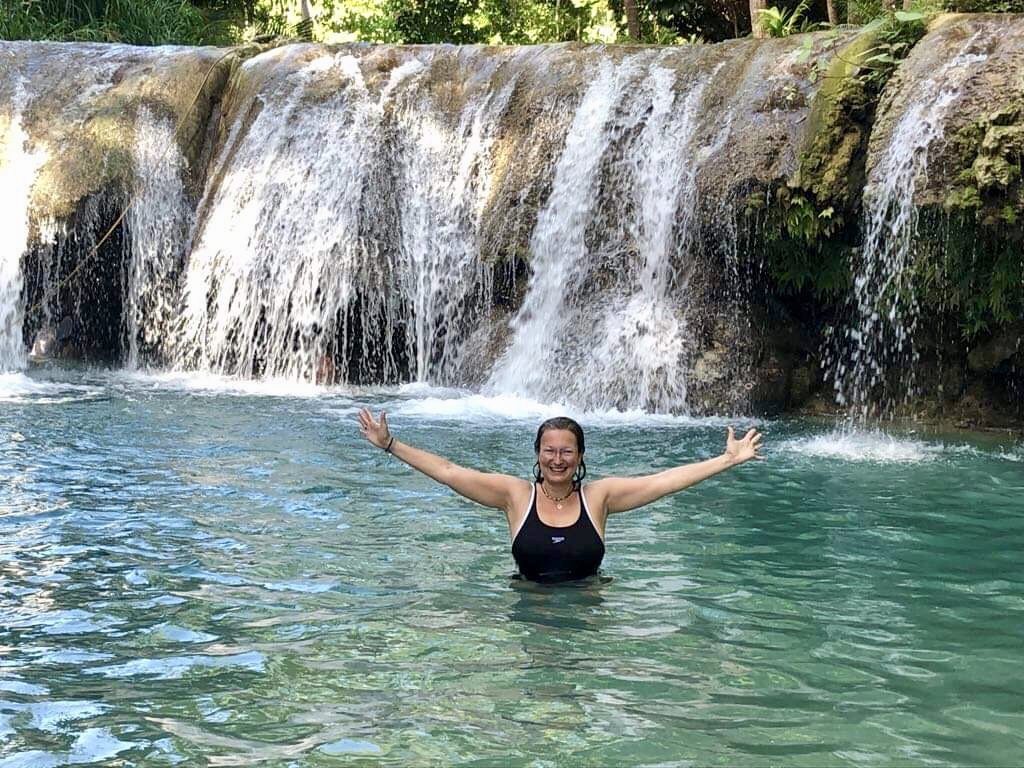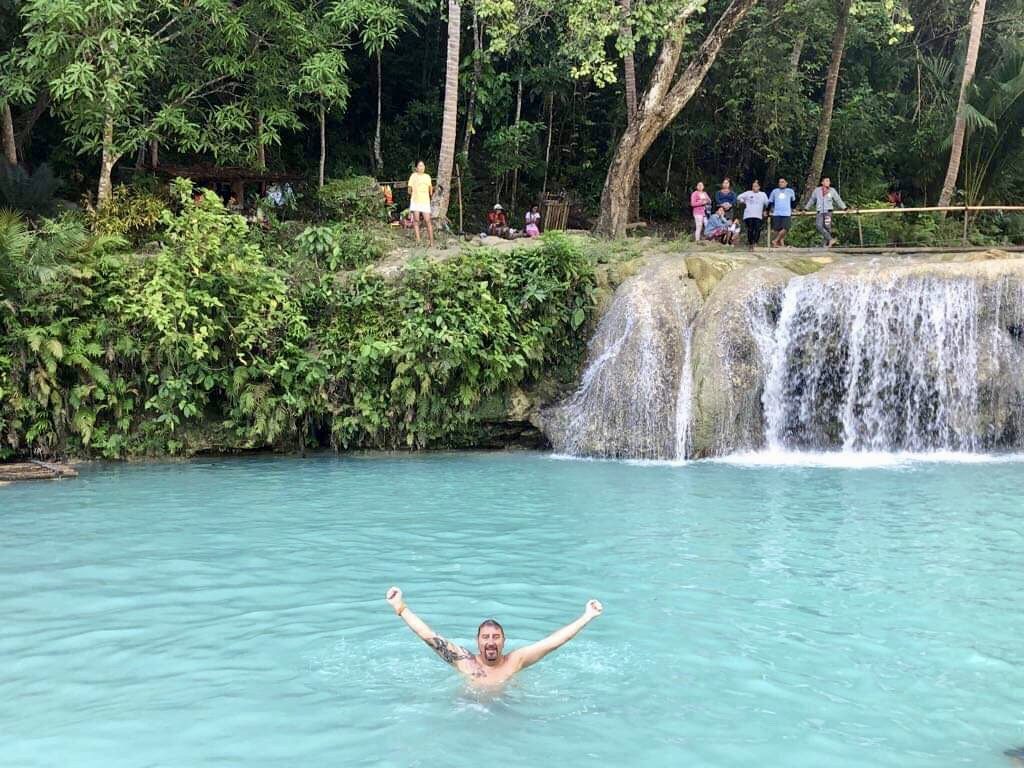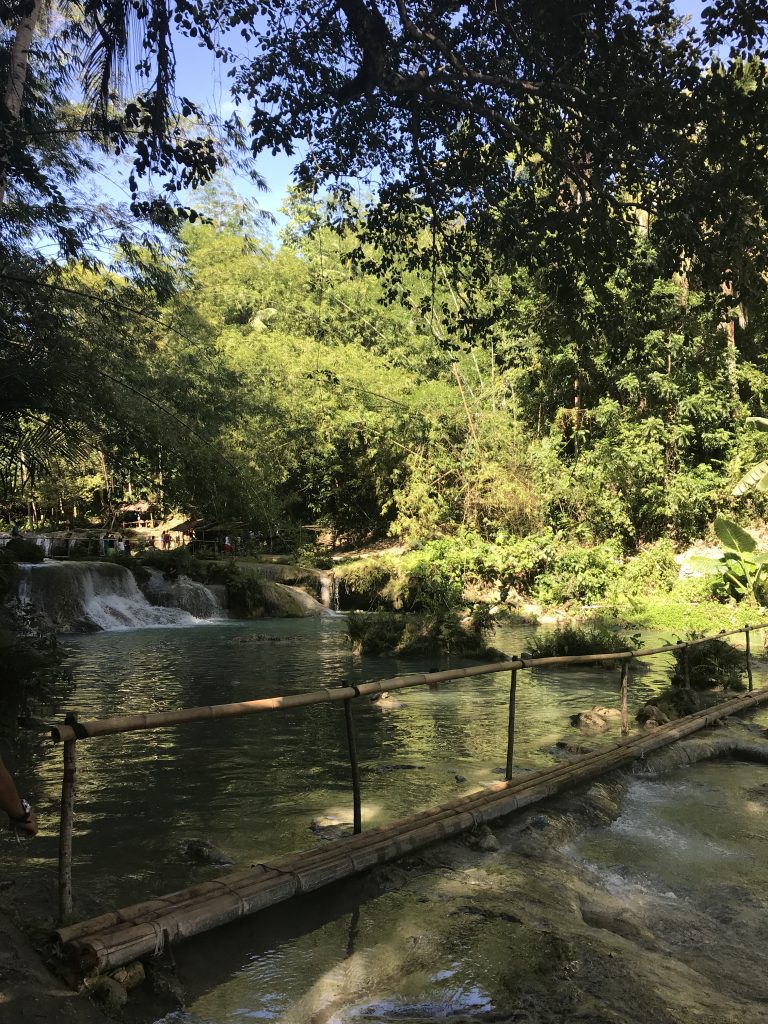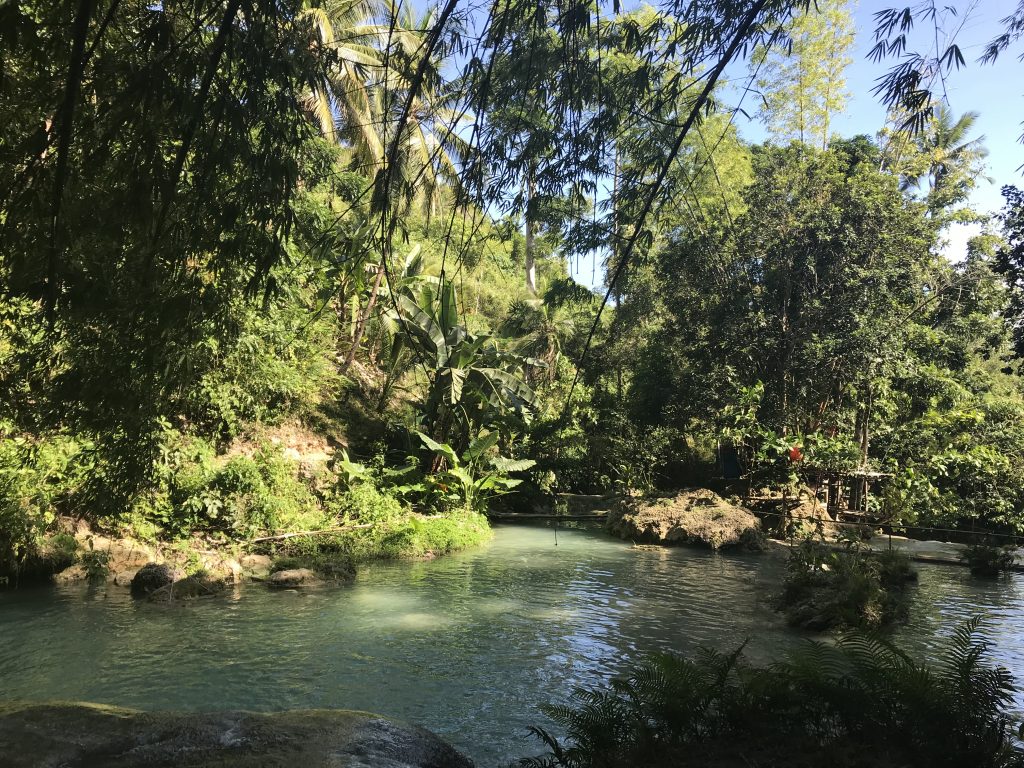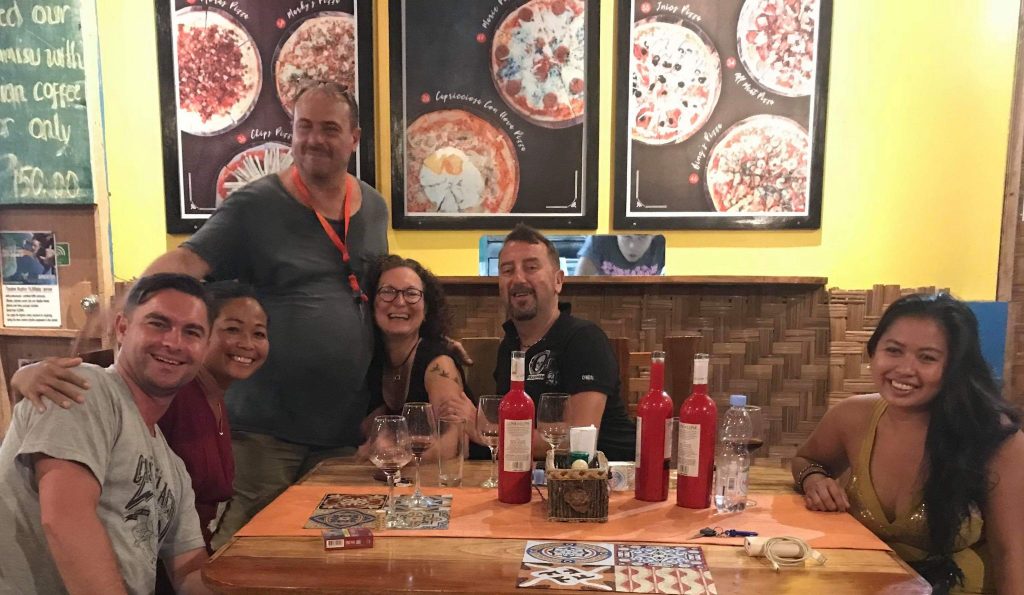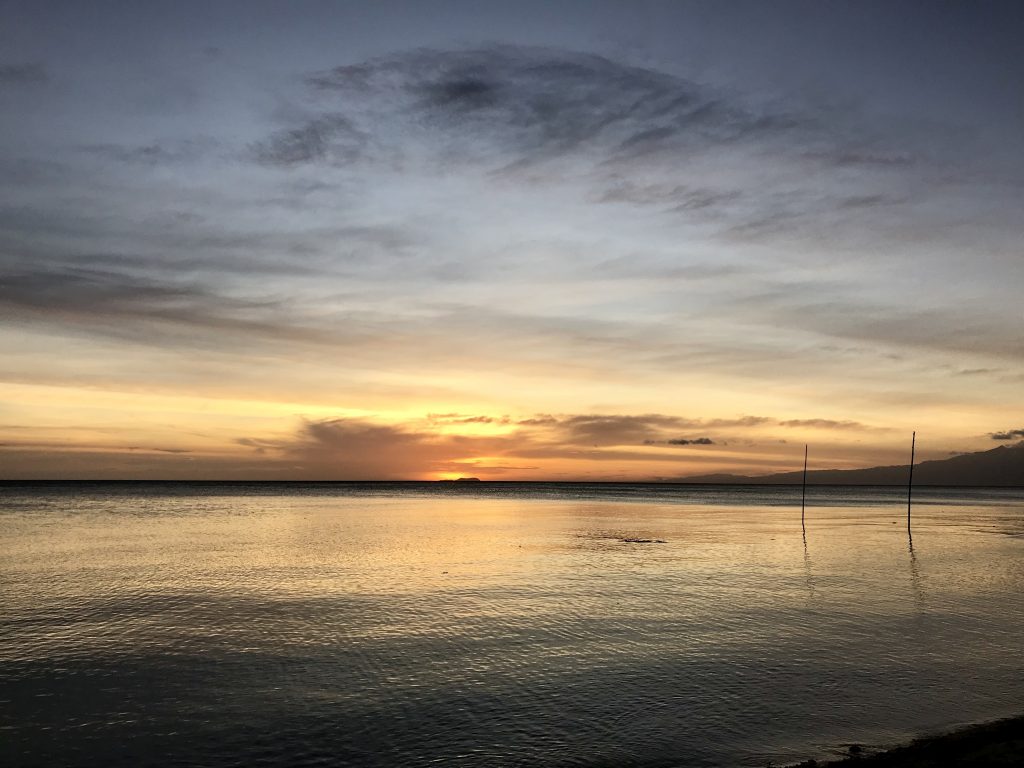With the island’s official slogan calling for bewildered awe, Bohol sure had a lot to offer. Known to the general public for its Chocolate Hills, it is also one of the habitats of tarsiers – the smallest living primates on Earth. If you never heard of them – you can use the powers of Google to discover a teeny-tiny little creature with huge eyes, looking like it is permanently freaked out and glad to see you at the same time. We chose a slightly more complicated way to get acquainted, and decided to visit the tarsiers at their natural home instead of a computer page. Philippine Tarsier Sanctuary was the main item on our list of places to visit, and the Chocolate Hills were going to be thrown into the mix, if time allowed. Turned out – it did.
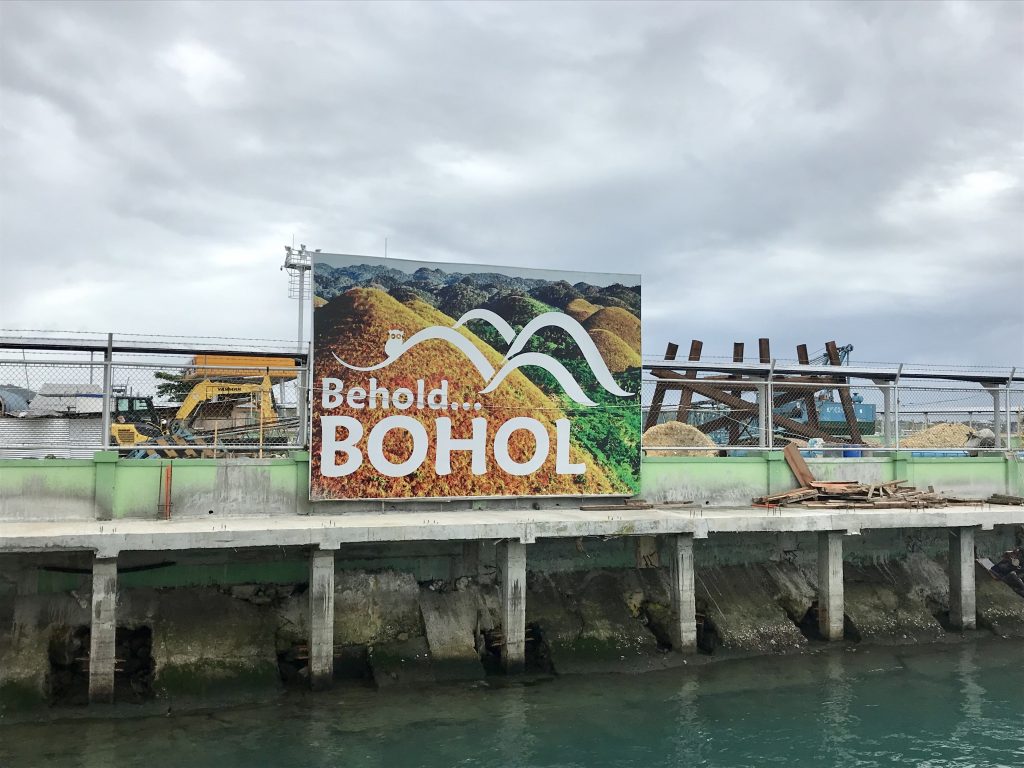
With all the island-hopping of the previous weeks we had only one day for Bohol, as spoilt with the choice of 7, 641 Philippine islands we had several other places on our agenda for this trip. A quick jet boat trip from the Larena Pier of Siquijor took us to Tagbilaran on Bohol in less than 1.5 hours. Even though the ride started with a collective prayer (with the captain and crew joining in by intercom), it was uneventful. Maybe the prayer helped…
After our quite modest digs by the side of the road on Siquijor, the Kasagpan Resort booked online for 2 nights in Tagbilaran for a very decent price looked more than luxurious. Far from your standard all-inclusive 5-star complex (our tastes and wallets make us stay away from those), it was a relatively small place with 2 lovely swimming pools, and several 2-storey buildings with guest rooms in a nice garden. Our new place of residence was a quick tricycle ride from the pier and within walking distance to downtown Tagbilaran, which turned out to be as ugly as they come. We weren’t planning on staying long anyway.
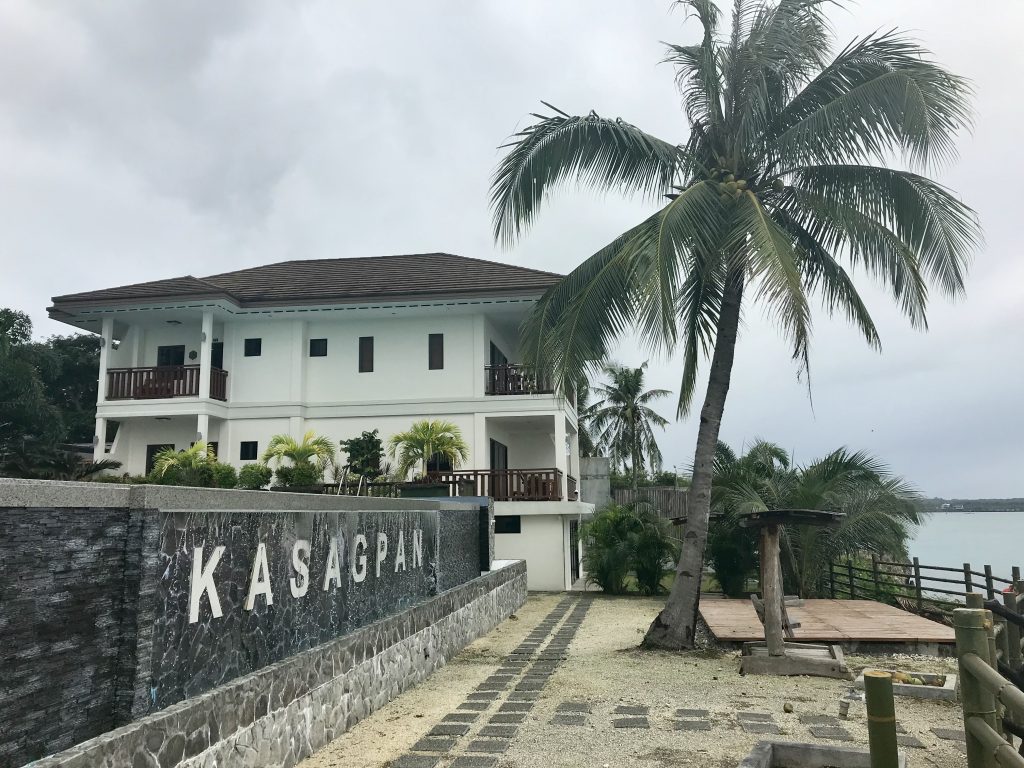
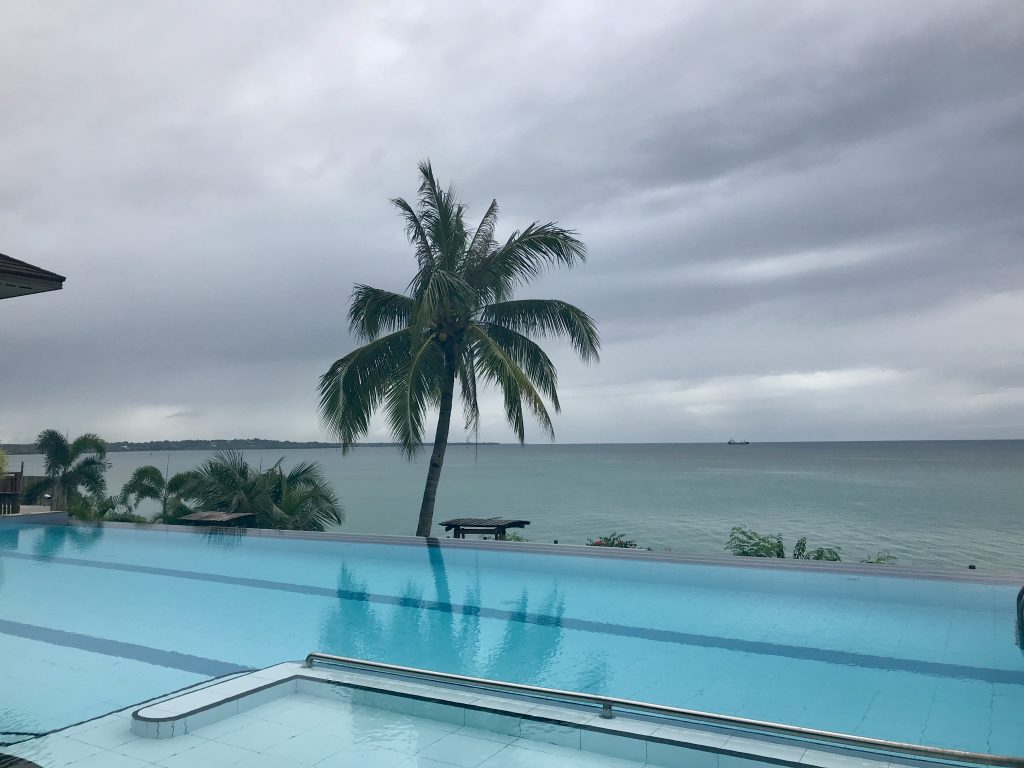
Exploring the island was on our agenda, though, and for this we needed a ride. Our lovely hotel did not have any scooters for rent, and the staff’s level of English prevented us from making further inquiries. We decided to chance it and walk into town centre in search of a mighty steed that will be taking us to tarsiers the following day. The steed was found literally around the corner – we barely walked a 100 meters away from the hotel, when an energetic and entrepreneurial-looking local approached us and expressed desire to help with whatever we needed. Our wishes did not stretch further than a scooter, which the guy readily agreed to source for us, and bring to the hotel in 15 minutes. We agreed on the price, and happily walked back in anticipation. Only half an hour later the guy showed up with a relatively decent moped and two helmets. The latter looked like they have been through several crashes, and a number of people already died in them. We expressed scepticism at the reliability of this method of protection, and our agreeable new friend repeated his “No problem!” mantra and took us to his cousin/brother/friend’s garage. Several more helmets of varied states of decay were presented to our inspection and we managed to find two relatively workable.
The next day we were all set up for our Bohol adventure. The first on our list was the Tarsier Sanctuary, but before setting up on our way, we planned to make a quick stop at the pier and buy ferry tickets for tomorrow. The pit stop set us back a good couple of hours, as the two ticket office windows at the pier were besieged by a crowd of maddening size. People of all ages and creeds were raging in two humongous intertwined queues, babies screaming, people demanding tickets for the boat that just left, quite a few un-identifiable languages thrown into the mix, and the two cashiers in the windows scarily peering outside. One pair of customers definitely stood out – a very tall Japanese guy, who spoke neither Tagalog, nor English, held up the queue for at least an hour, trying (unsuccessfully) to explain what he needed and where he needed to go with the language of gestures. His tiny wife/girlfriend, who barely reached to his armpit, was standing next to him on tip-toes, all the way fanning him with her hat. After a very painful hour (I am sure I heard quite a few expletives directed at the pair in various languages), they finally left – he with a regal look on his face, parting the crowd that eagerly got out of the way and closer to the ticket windows, and she tip-toeing behind him fanning him non-stop. After the couple’s departure, things started moving considerably faster, and within an hour, we were proud owners of two ferry tickets to Cebu for the following morning.
Now – tarsiers! It took us another hour to get out of Tagbilaran navigating its absolutely mad traffic, but after we made it out of town, the Tarsier Sanctuary was very easy to find and we got there before midday. Located 15 km away from the city just off the Tagbilaran City-Corella-Sikatuna-Loboc Road, it was well sign-posted and much anticipated on our part. The Sanctuary did not disappoint one bit! For a handy price of 60 Philippine pesos (about €1.10), you get access to the semi-wild enclosure – a part of natural jungle forest cordoned off to keep any dangers away from its tiny inhabitants, the place provides tarsiers with a much needed peace and quiet, and the scientists with an opportunity to observe and study them in their natural habitat.
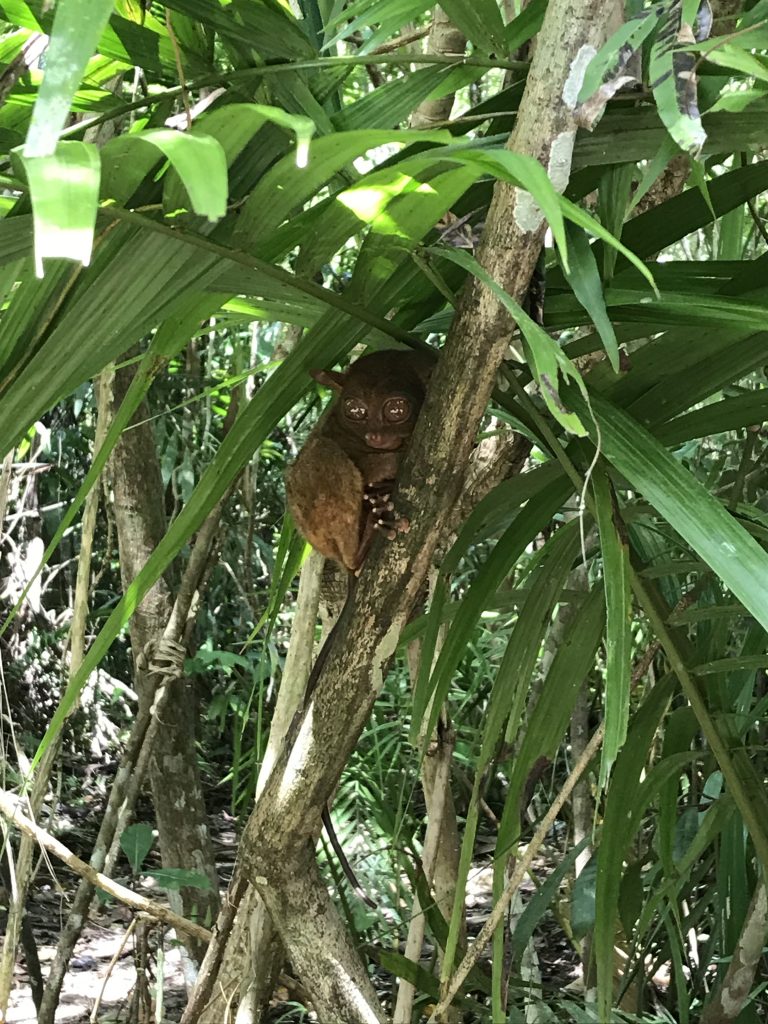
Tarsiers are nocturnal and extremely shy, so chances of spotting one in the wild are extremely low. They are very sensitive to bright lights, loud noises, or physical contact up to the point of behaving suicidal when stressed or kept in captivity. This behavior does not make them a likely center of attention, but the Philippine Tarsier Foundation running the sanctuary did a wonderful job to accommodate both, the visitors and the inhabitants. In the morning, before the opening hours, the sanctuary scouts walk around the enclosure to spot tarsiers, who after their nocturnal adventures settle for the day and do not move until sundown. The guides then stay put, and point out these unbelievably beautiful little primates to visitor, also making sure that the latter don’t do anything stupid. Without the help of guides, it would have been absolutely impossible to spot the tarsiers, some of which were not bigger than a baby’s fist. We saw 6 or 7, who decided to camp for the day near the foot paths, and could admire these freaked-out looking beauties quite close. As all nocturnal animals, the tarsiers did not exhibit any energy during day hours, and just sat there, holding on to the tree branches with their tiny fingers and staring at the surrounding world with gigantic unblinking eyes. I don’t know if it’s the eyes that contributed to this impression, but tarsiers did not look relaxed or chilling, they had a manic and haunted look in their huge eyes, and seemed to be very tense, trying to hold on for dear life.
We spent about an hour, walking down the narrow paths of the tiny enclosure, admiring the tarsiers, and learning more about them from the guides and informational posters. What an absolutely wonderful way to spend time on vacation!
With still half a day ahead of us, we decided to give Chocolate Hills a go. Located right in the middle of the island, and judging by the photos quite big and numerous (according to UNESCO, there are 1,7760 of them!), we figured they would be hard to miss. There seemed to be more than one way to get to the hills, and obviously, we chose the wrong one. Not the “wrong” wrong one, but just a longer and more scenic road, which in the end turned out to be a worthy detour to add to our collection of freaky places. From the Tarsier Sanctuary we could have continued down the Tagbilaran City-Corella-Sikatuna-Loboc Road and then turn into Loay Interior Road, but we decided to make a circle around the island, and instead rode a little back, taking the Corella-Balilihan Provincial Road (read: no tarmac), connected to the Cortes-Balillihan-Catigbian-Macaas Road, and when into the woods on Catigbian-Sagbayan Road. Bohol roads not only had impossible long names and were exceptionally dusty, making us ride in the vapors and sand clouds from the bigger vehicles sharing them with us, but were not signposted on crossroads. Thank God (who does not exist) for Google Maps, that show ones location on the phone without WiFi or roaming – without them we would have been proper fucked!… At every crossroads we had to pull over, take off our sweaty helmets and peer into the dusted over phone screen, trying to figure which next turn to take. It was a tedious process, but it worked.
After about an hour travelling on dusty roads, we started seeing green grassy mounds that looked very much like the Chocolate Hills we were looking for. The first road sign, inviting to enjoy the Hilltop 360° View Park followed, and happy with seemingly reaching our desired destination, we turned off the road. A goad/hedgehog path leading to the spot quickly made us doubt that it was leading to the official Visitor’s Center, but we needed a break.
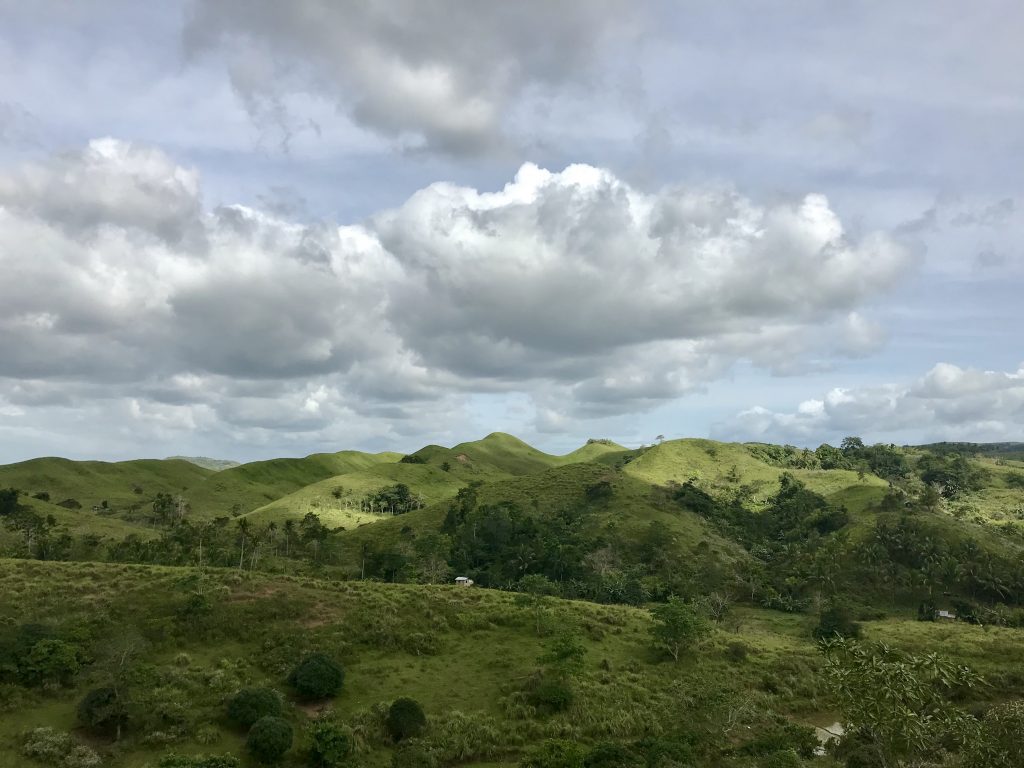
The place turned out to be a private property, located on hilltop, and offering vast entrepreneurial possibilities, which the owners readily used. For the entrance fee of 50 Pesos (less than 1 Euro), visitors could come onto the grounds to enjoy the breathtaking views of the area filled with green hills, and the experience the grounds themselves, which looked like an outdoor studio of some mad artist. A huge freaked-out looking pigeon was perched on the side of the hill presenting a great photo opportunity to all the visiting idiots (we readily partook in the fun); the huge torsos of the inevitable Mary and Joseph were sticking out of the top of the hill, and made you wonder about the sanity and/or religious zeal of the artist.
The ticket office also sold fresh coconuts, and after admiring the views and the art we happily sat in huge wooden chairs, drinking ice-cold coconut juice and musing over the place. Not necessarily the Hilltop 360° View Park, but the Chocolate Hills in general. Recognized by the UNESCO as a National Geological Monument, the hills are nature-made mounds, occurring due to the uplift of coral deposits washed out by rainwater and erosion. The name kept bothering me – why on earth would these emerald-green tops be ever compared to chocolate?… Turned out that we were on Bohol at the wrong time. During the dry season, the grass on the hills turns chocolate brown in color, making them look like giant Hershey’s Kisses sticking out of the ground. With a bit of imagination, we could see that, for the shapes were unmistakable.
Having re-charged our batteries with coconuts, we continued on our way, following our circular route direction Tagbilaran. We were tired, dusty, and having checked all items on our agenda for the day were ready for a shower a swim, and a dinner. Turned out, there was still more to come. We turned from the Central Nautical Highway into the Loay Interior Road and in less then 5 minutes came onto the sign for the official Chocolate Hills Park viewpoint. We fought a brief, but strong desire to continue on our way, and turned off the road for our tourist duty. We were here, and were inclined to see it all! The sacrifice was bigger than we initially thought, for though the entrance to the viewing point was free, it was located on top of a very steep hill with a very long and narrow staircase leading to it. Huffing and puffing like two elderly hedgehogs, we fought the stairs, and were not disappointed – the view was spectacular! You could see the hills up close and personal, much clearer than from the Hilltop 360° View Park. There was none of the wackiness of the Hilltop, though – just crowds of equally hot and exhausted tourists braving the stairs. In the end, luck was on our side – having been to both places, we definitely enjoyed the hills to the fullest!
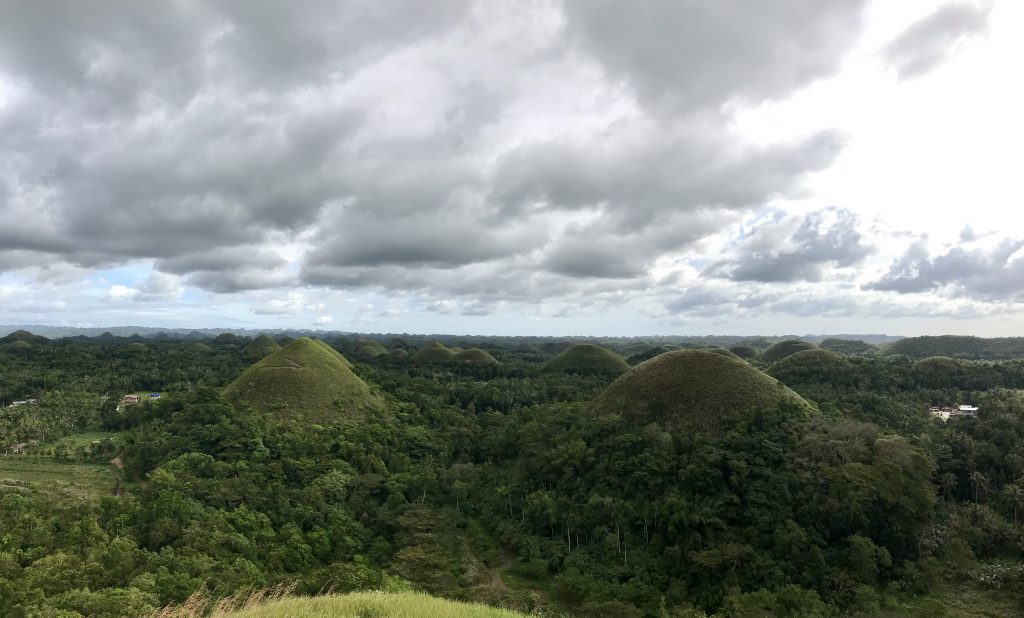
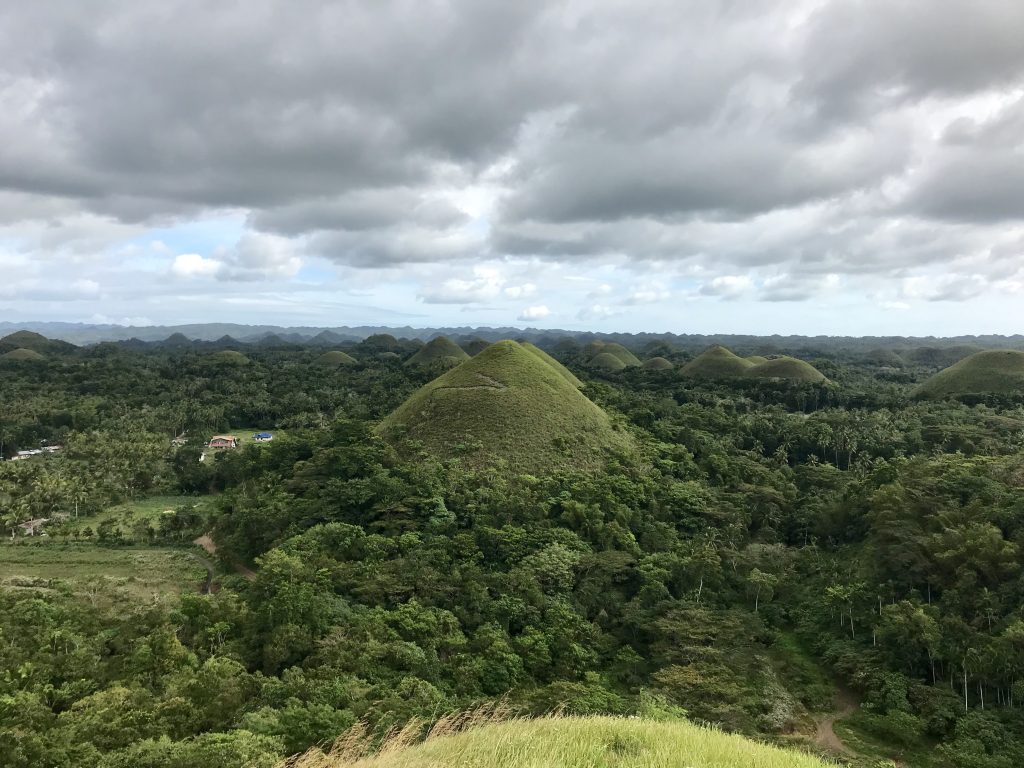
Back on the Loay Interior Road we seriously missed our Harleys – the route was beautiful! Nice, lazy curves, running under the thick canopy of the giant trees on both sides and coming out into the almost day-glow brightness of the green fields with Chocolate Hills in the background all called for admiration. Bohol did not disappoint.
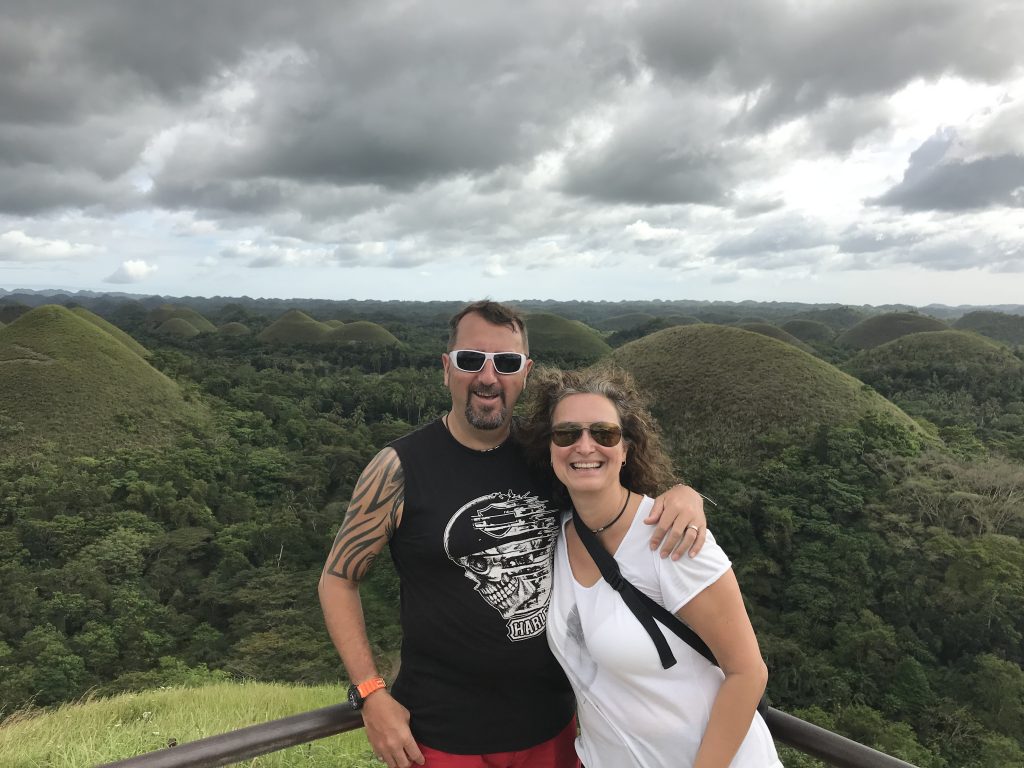
Next stop – Palawan!
